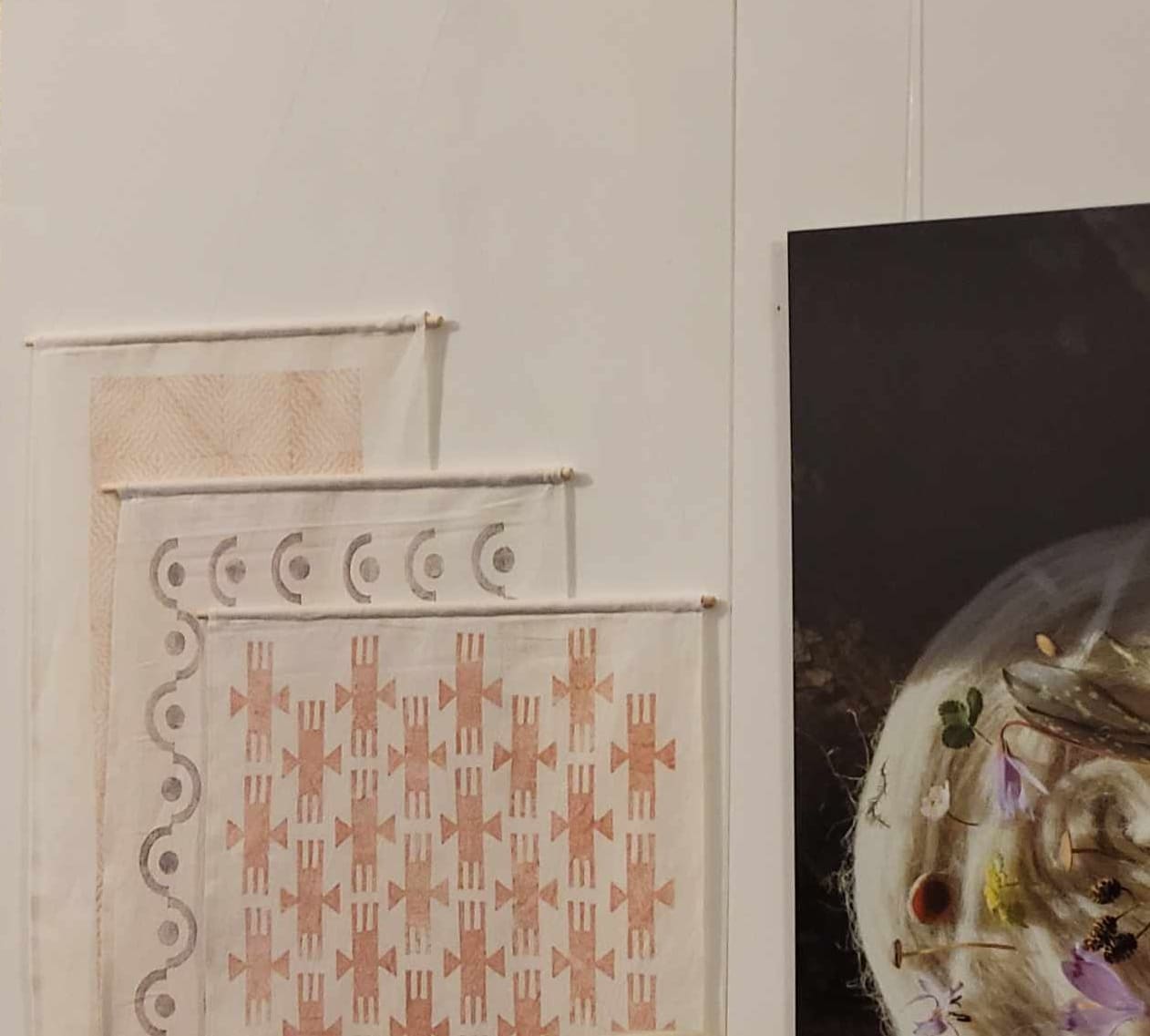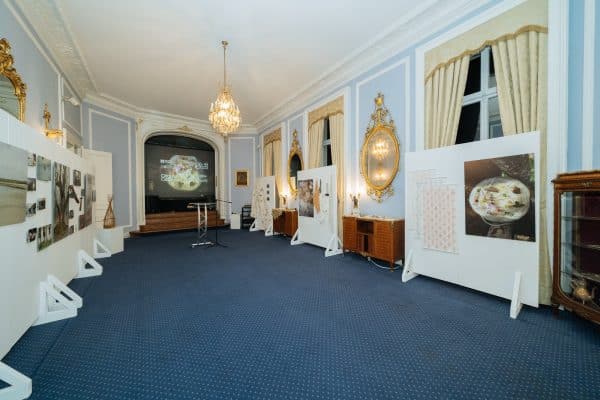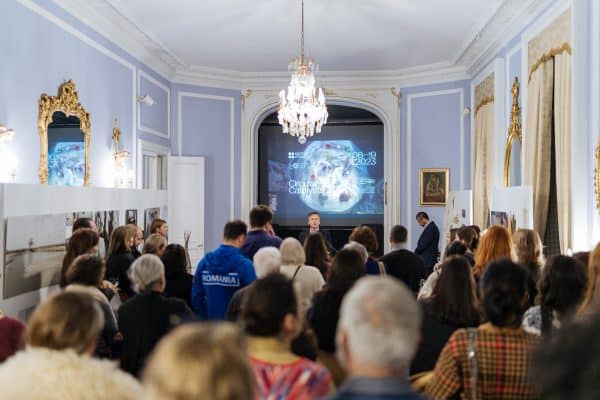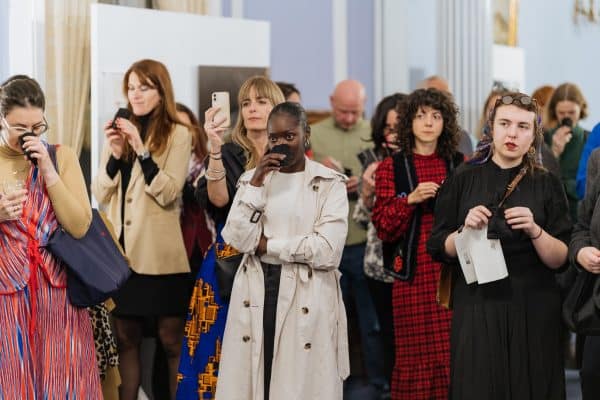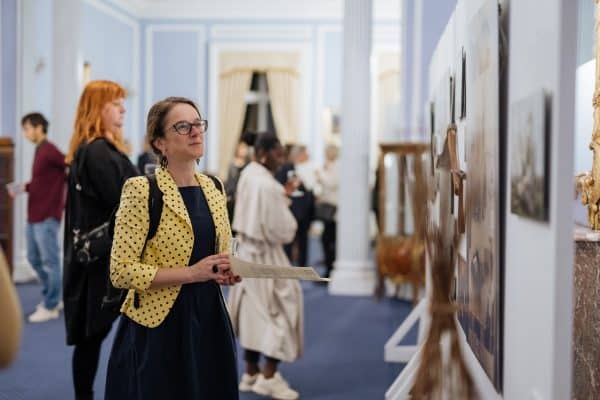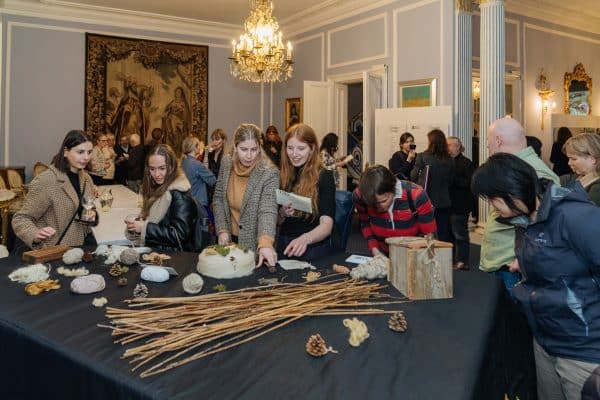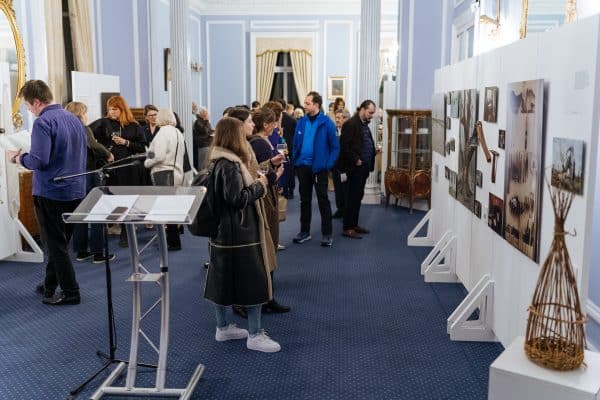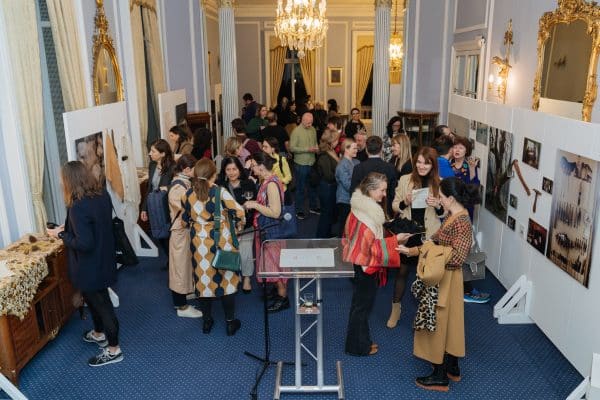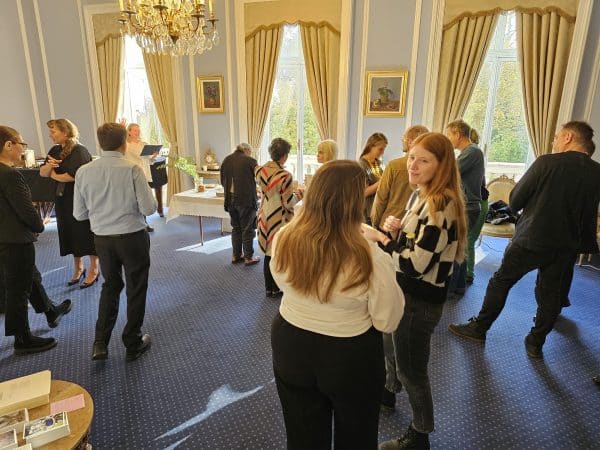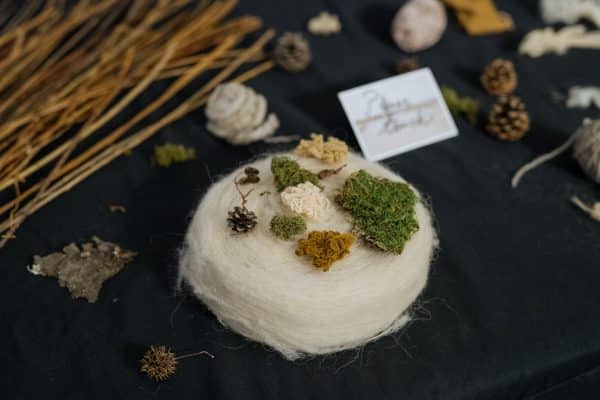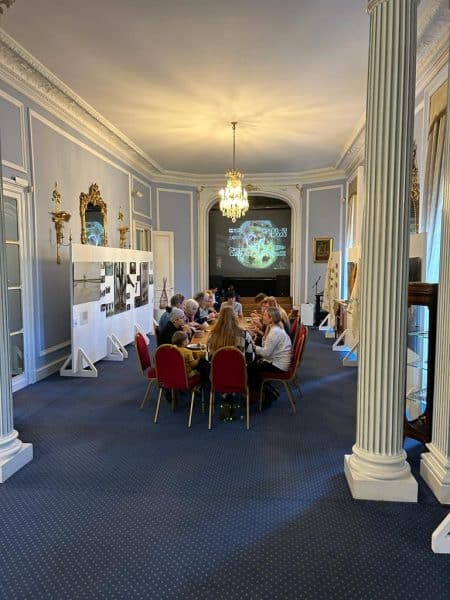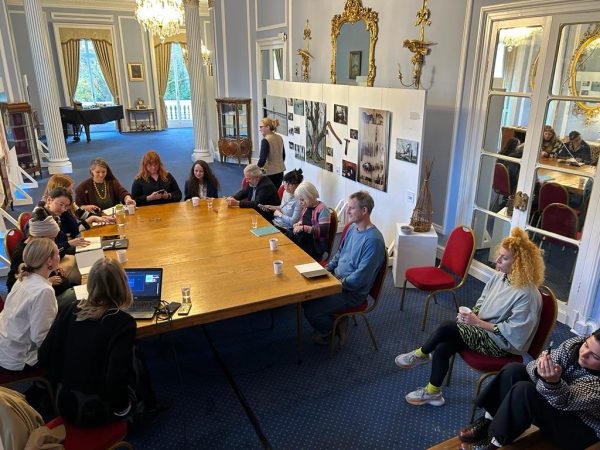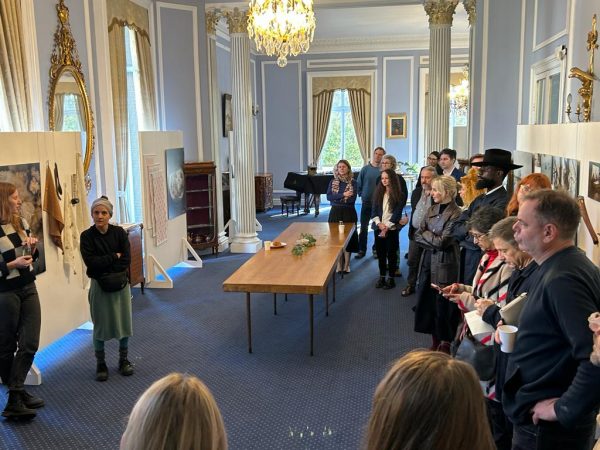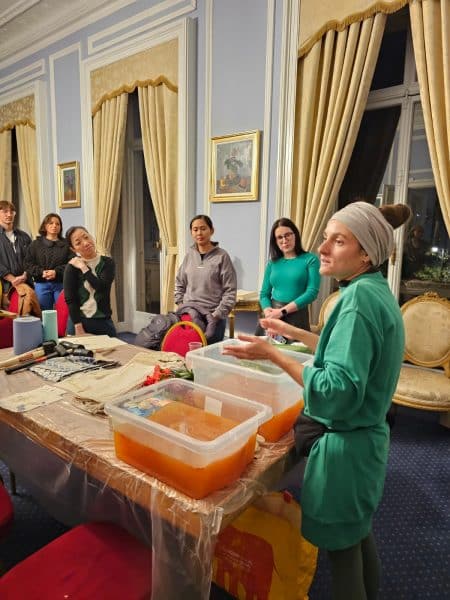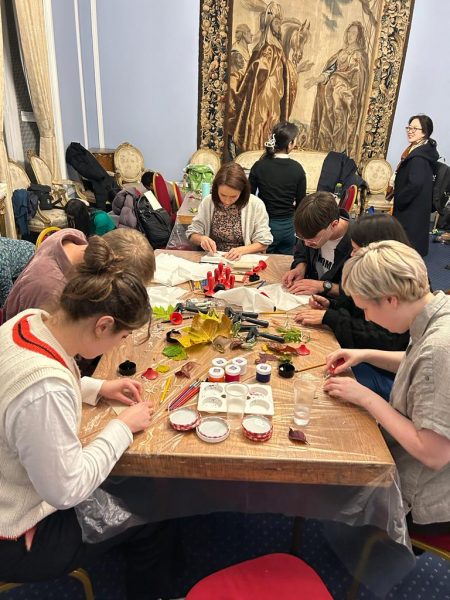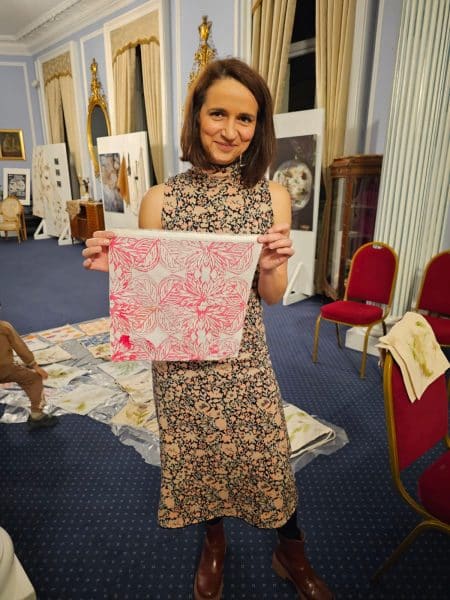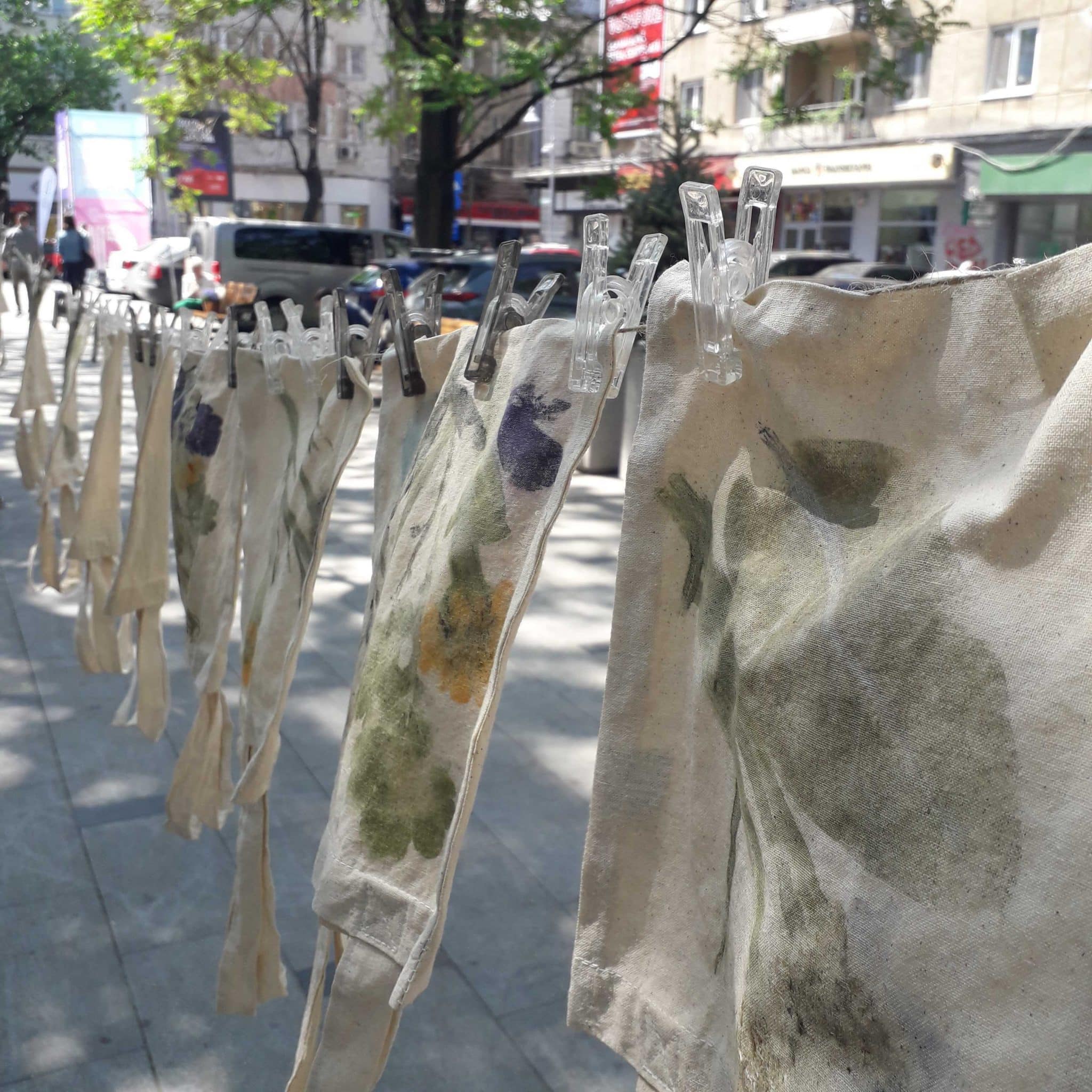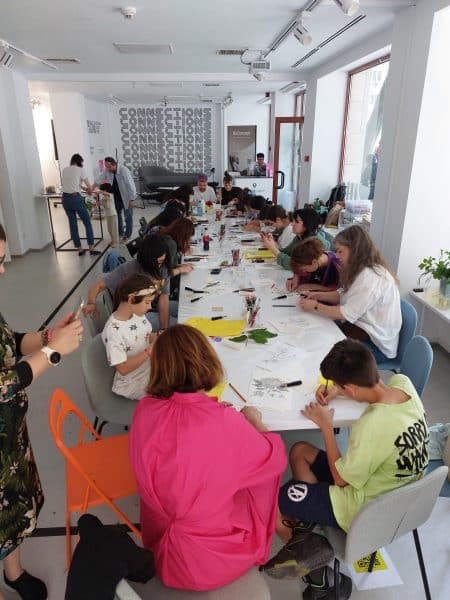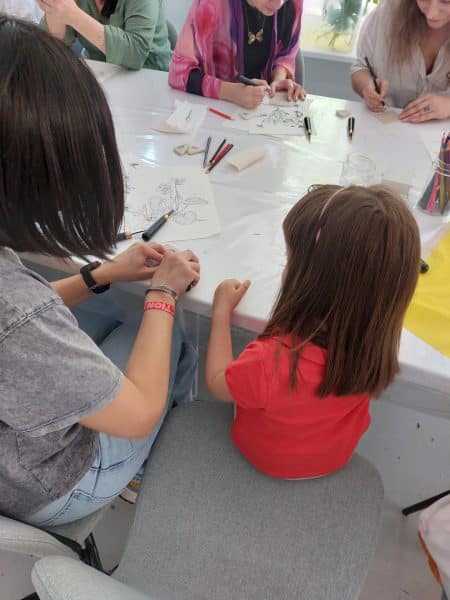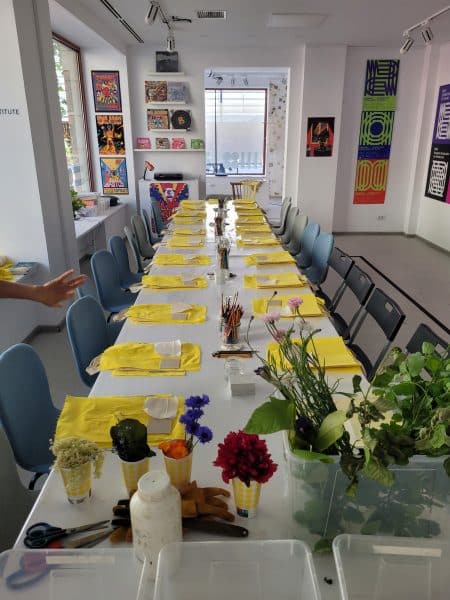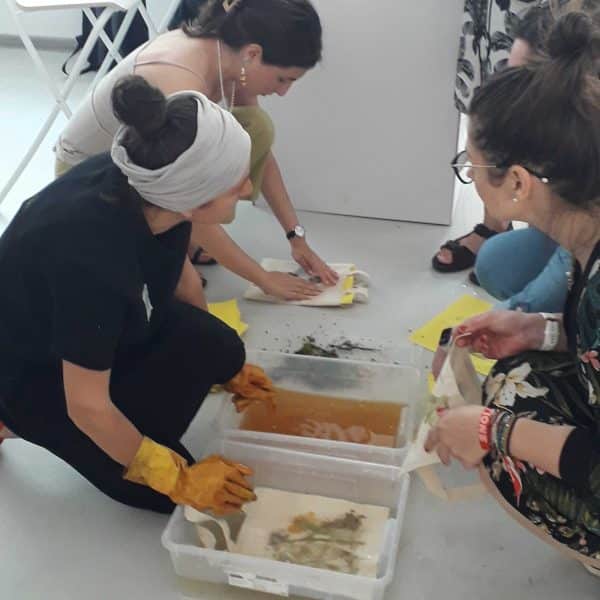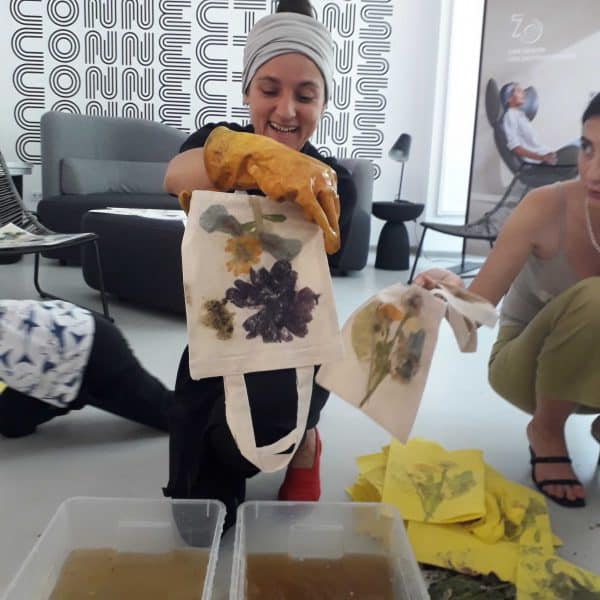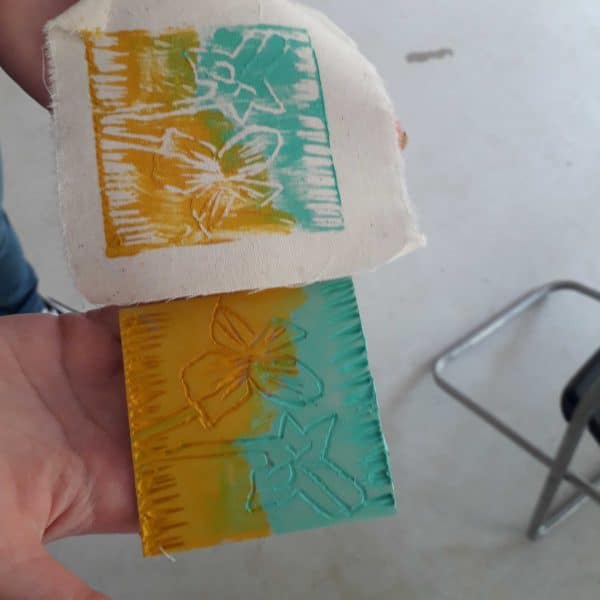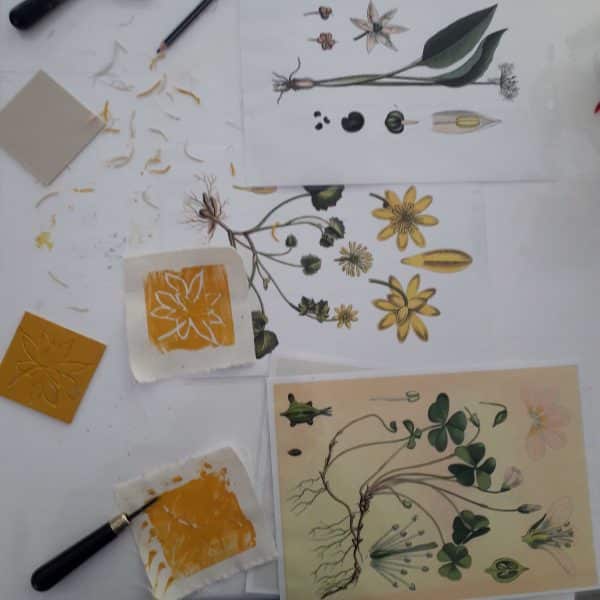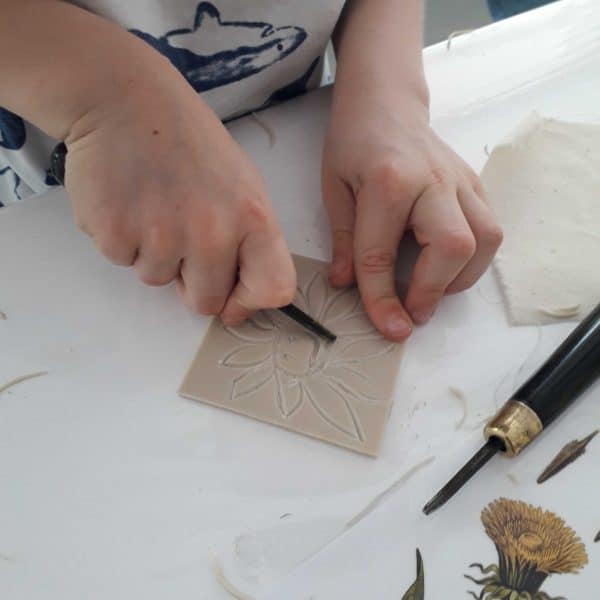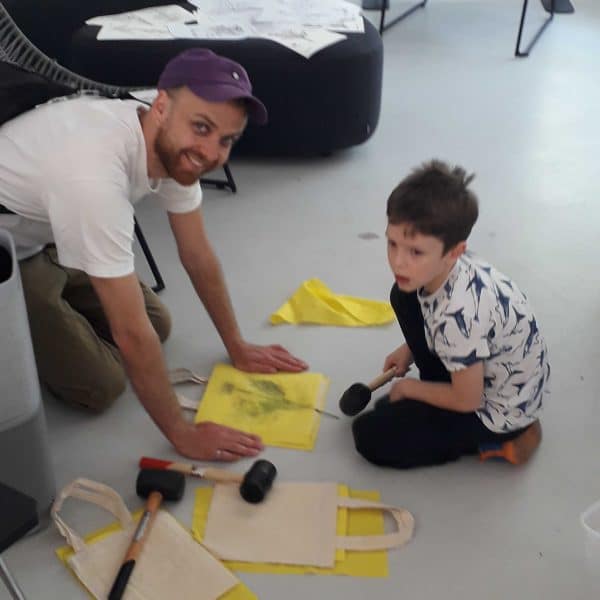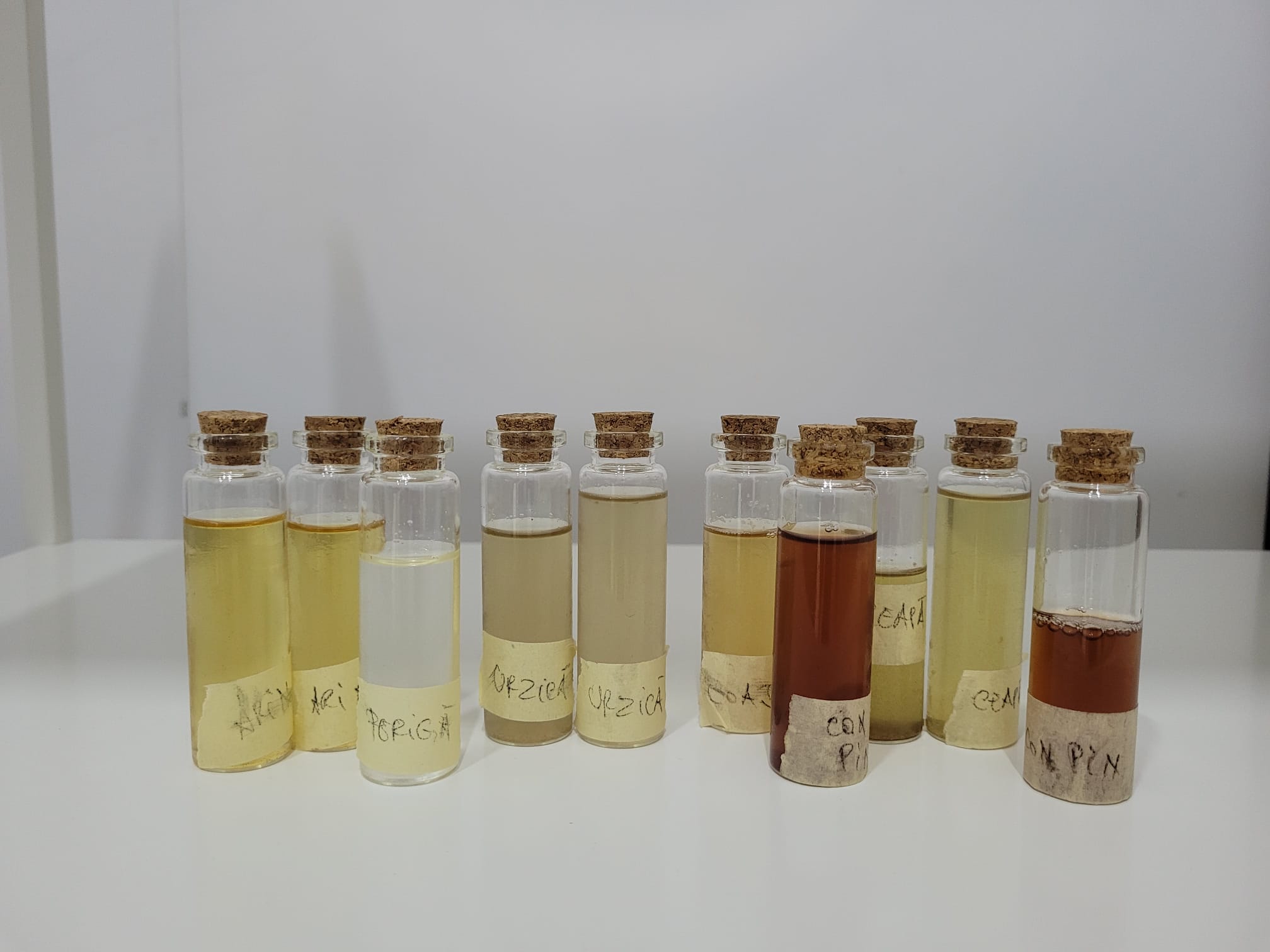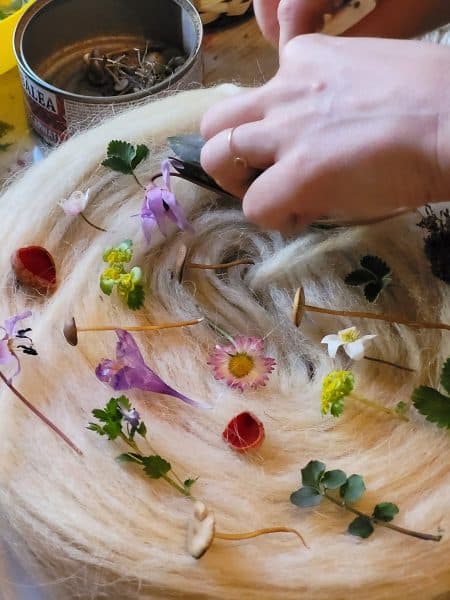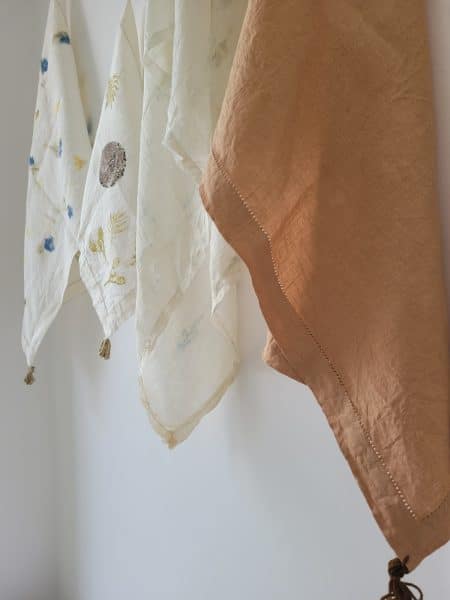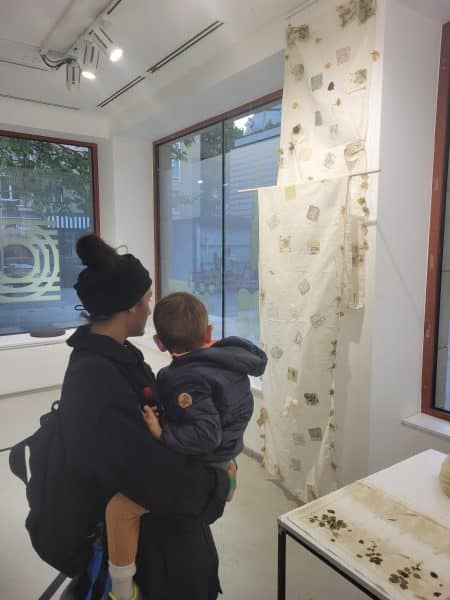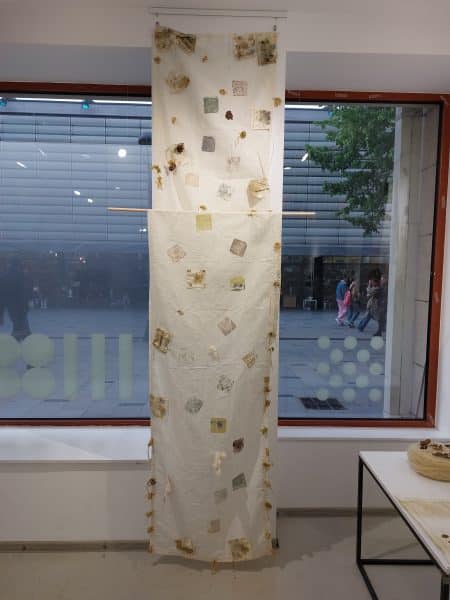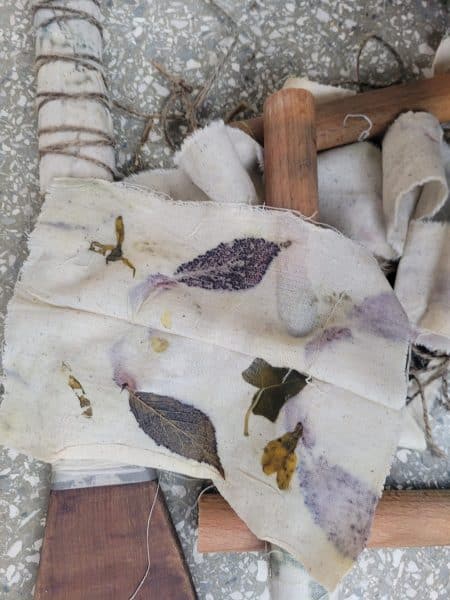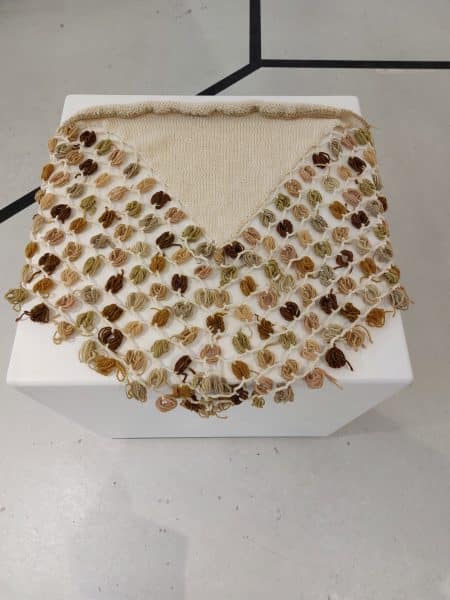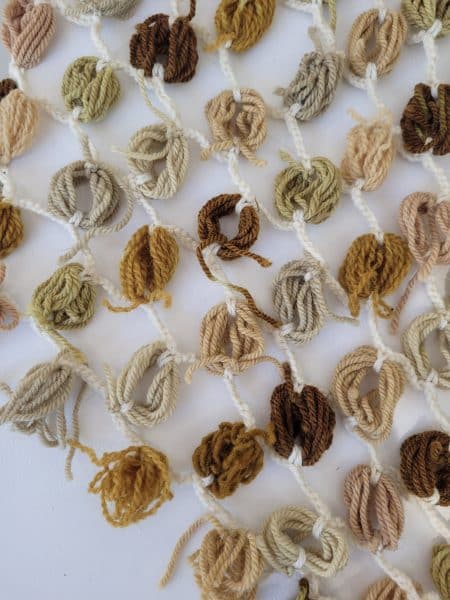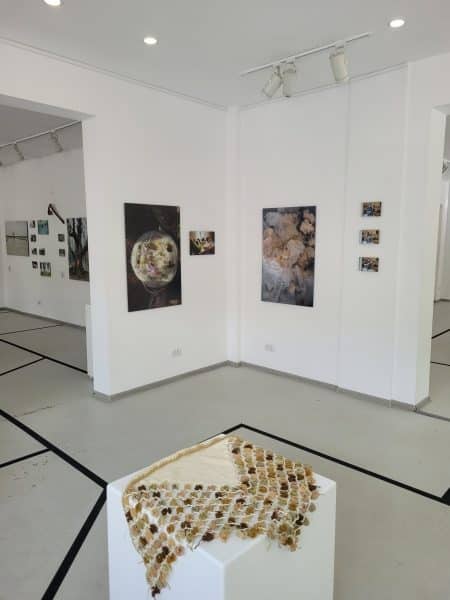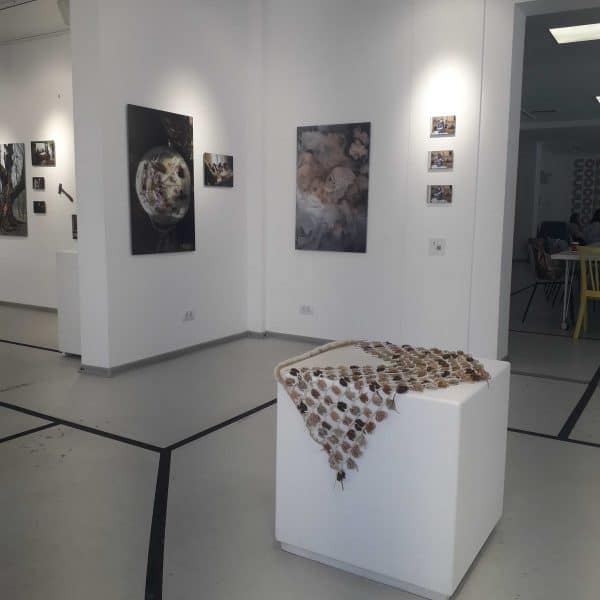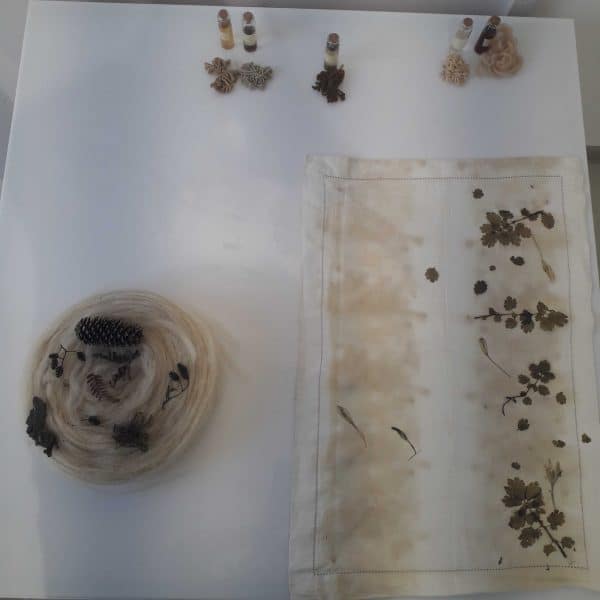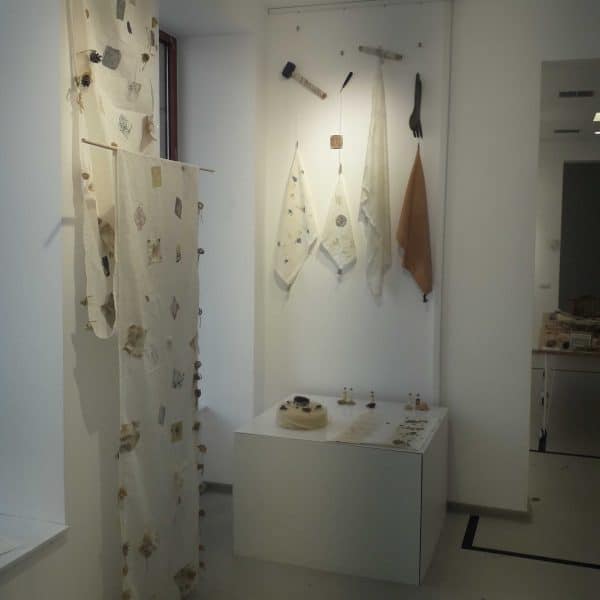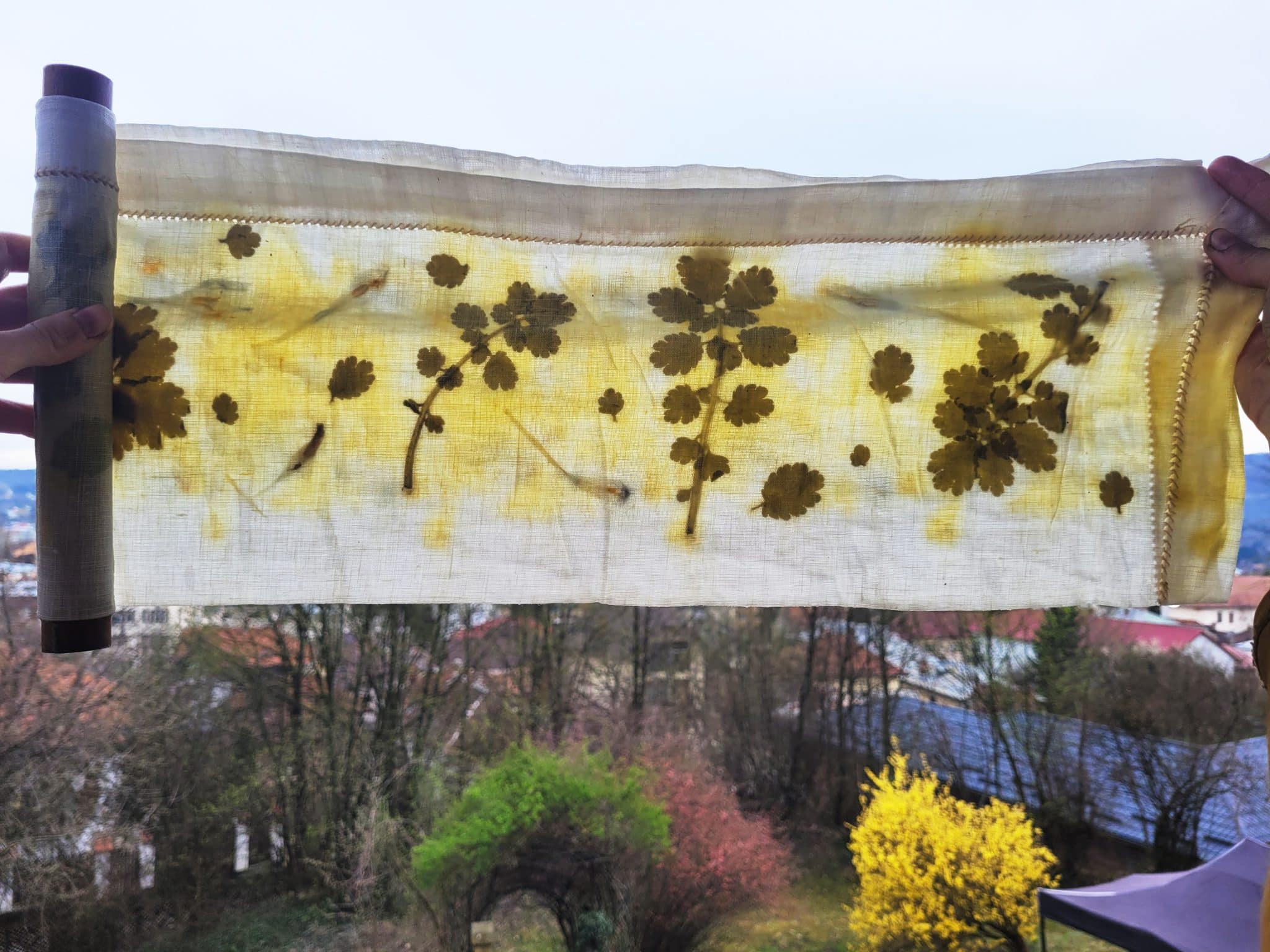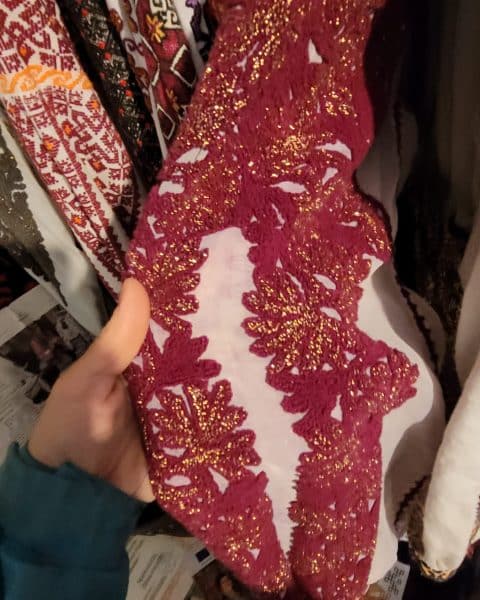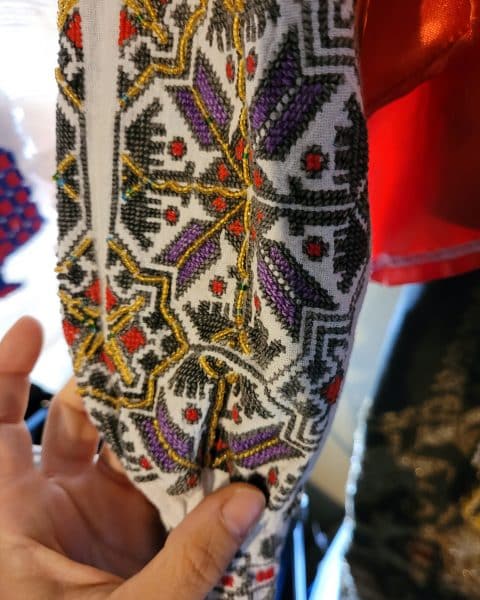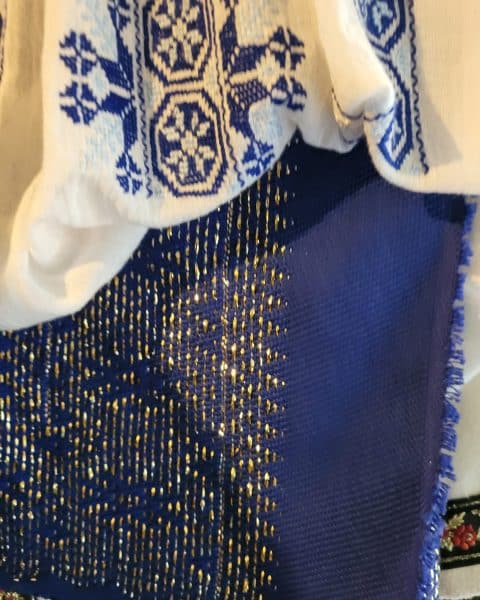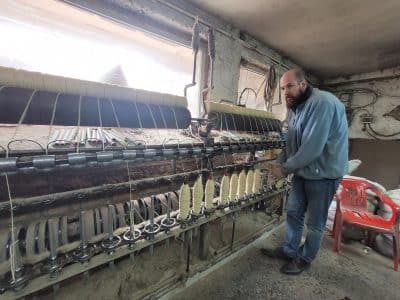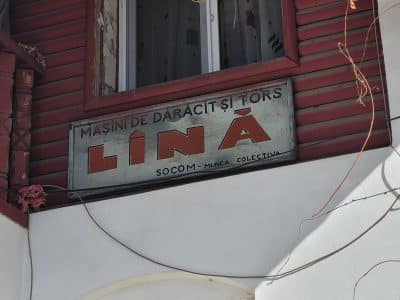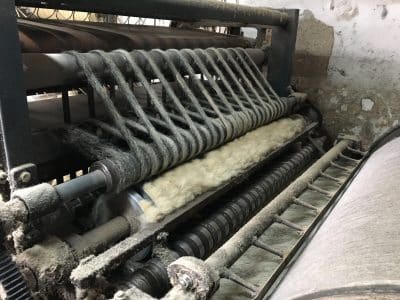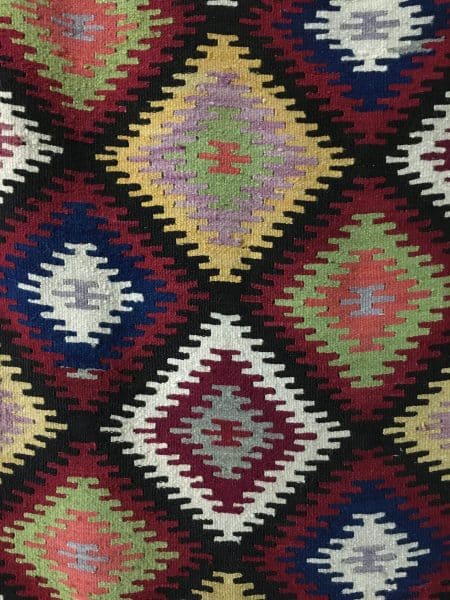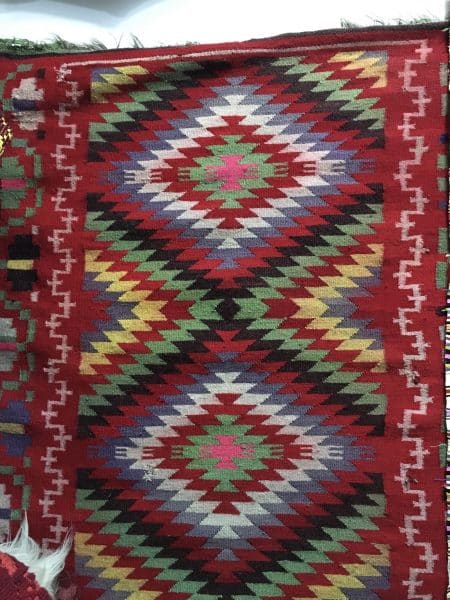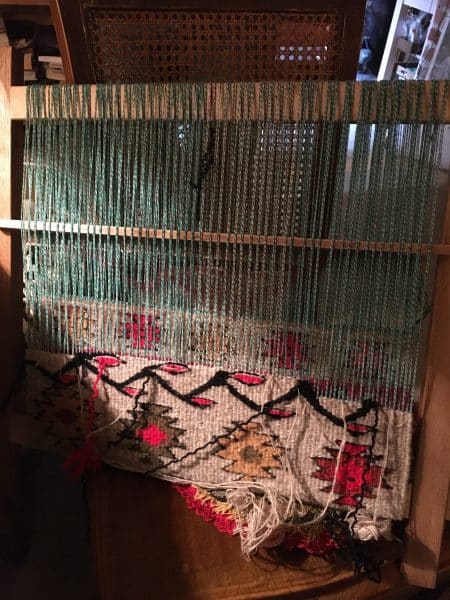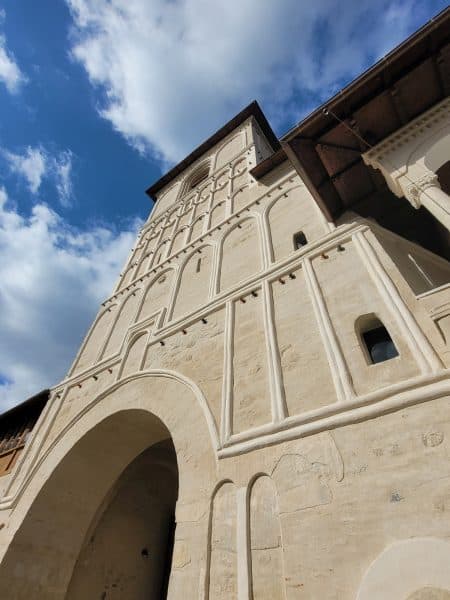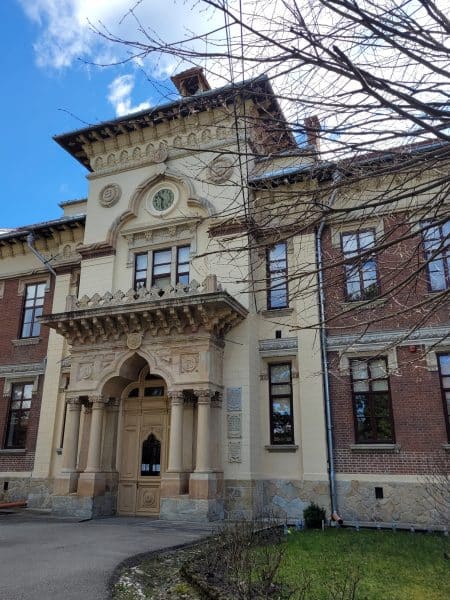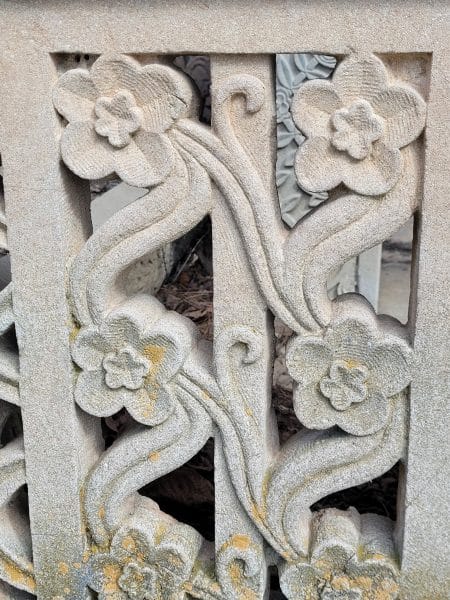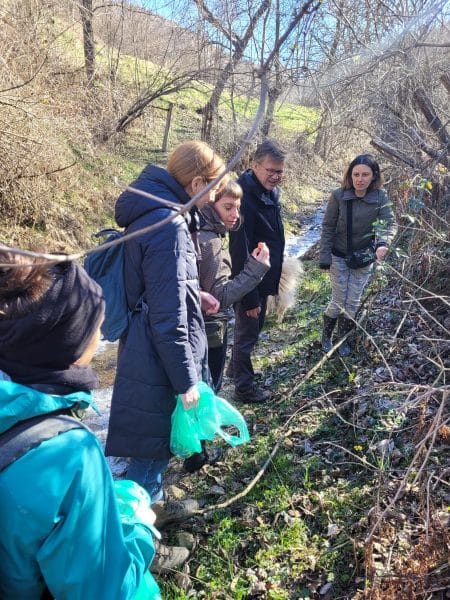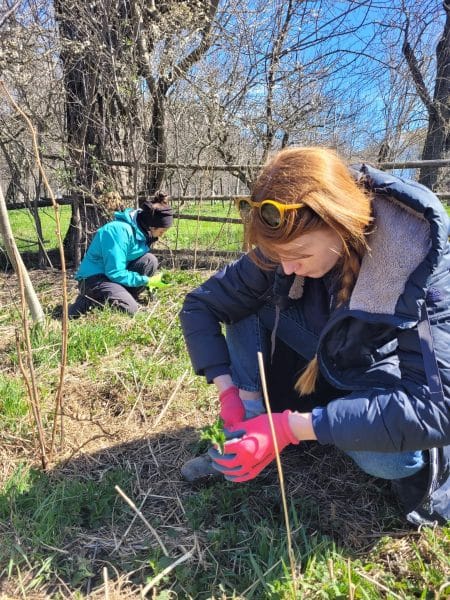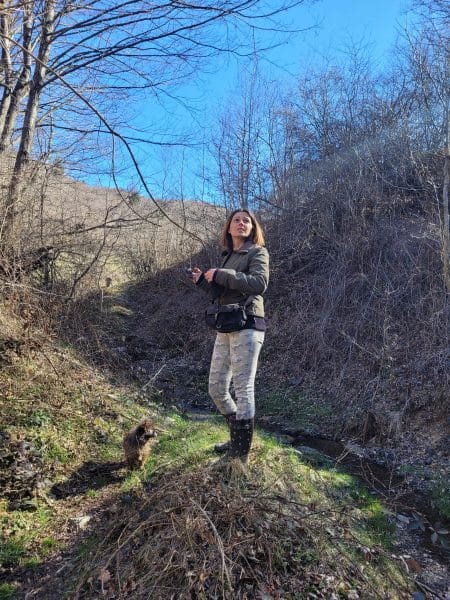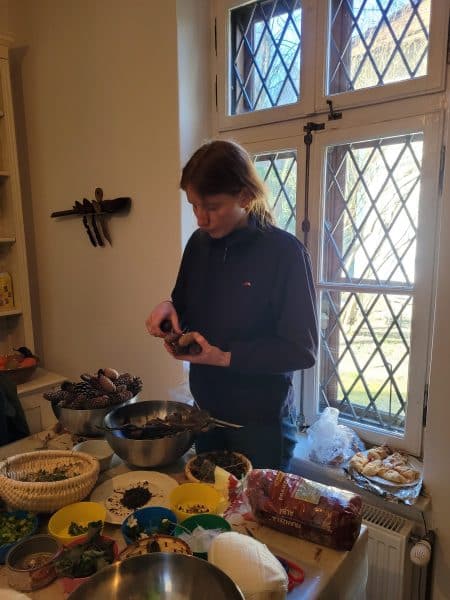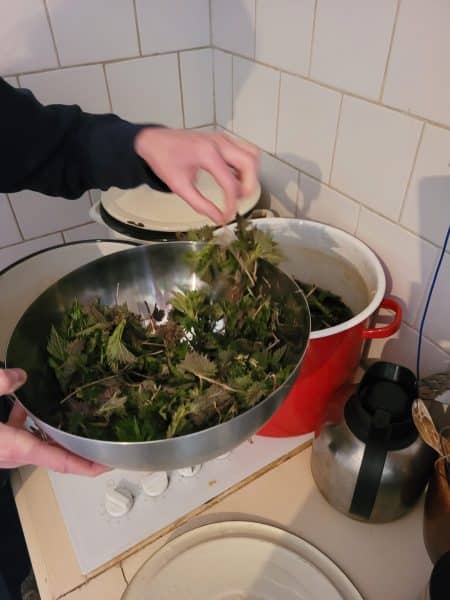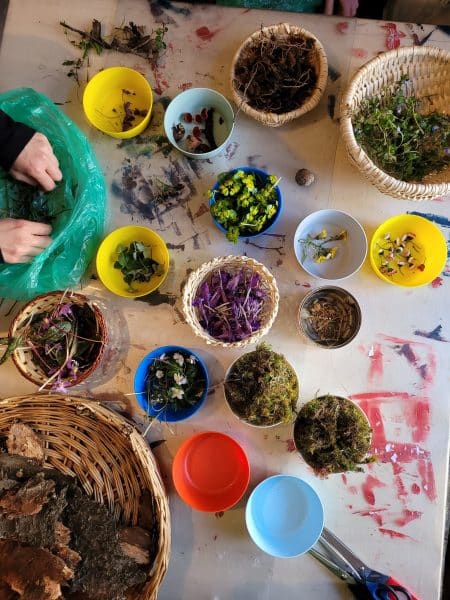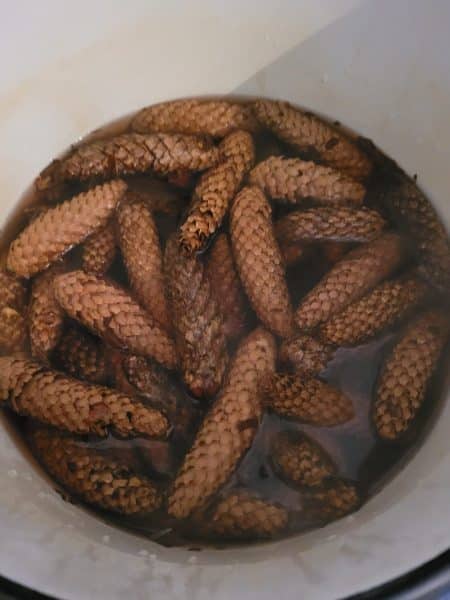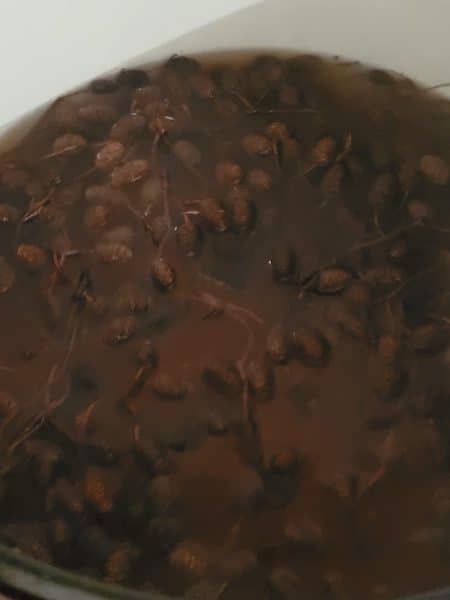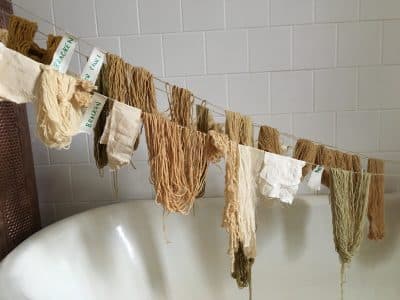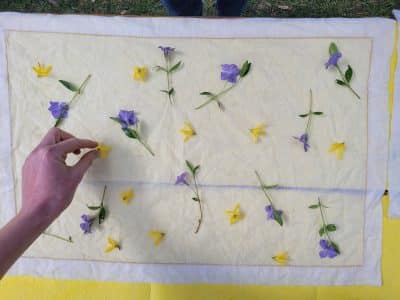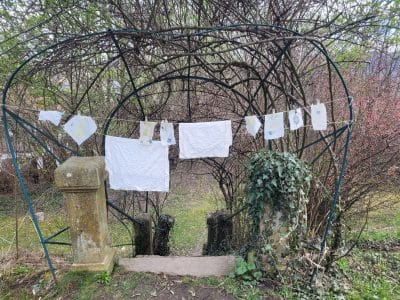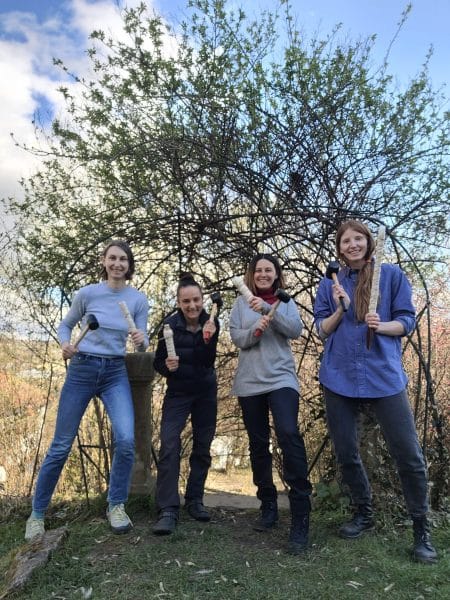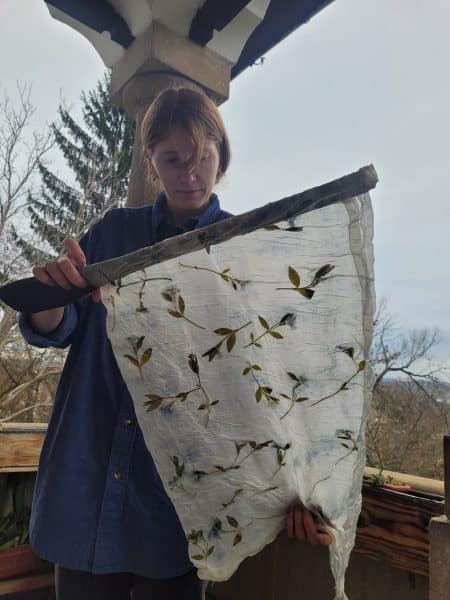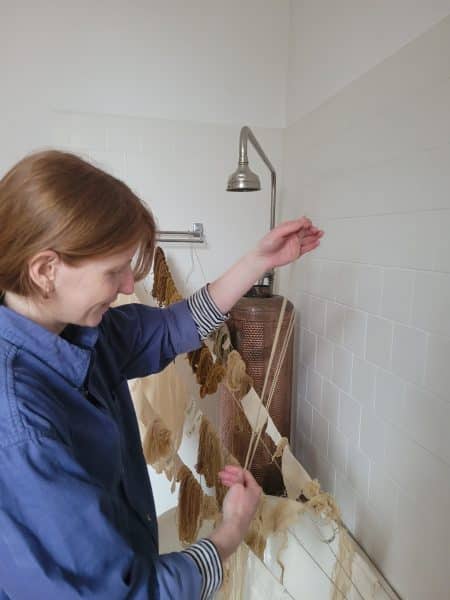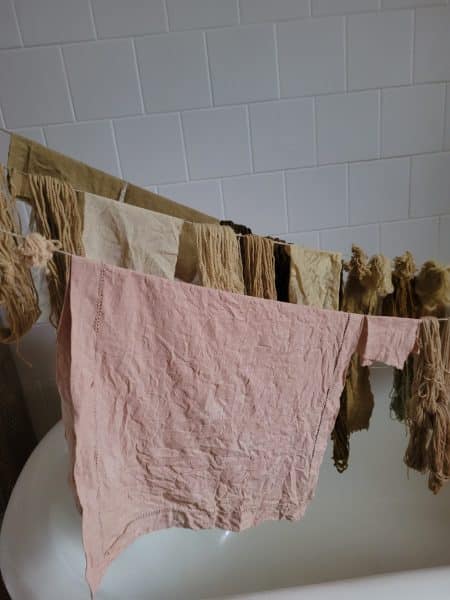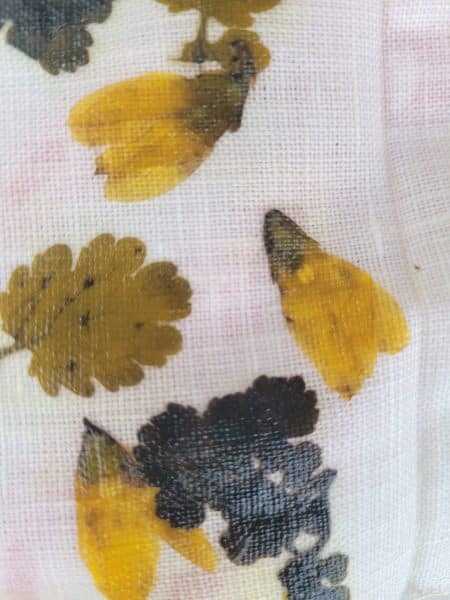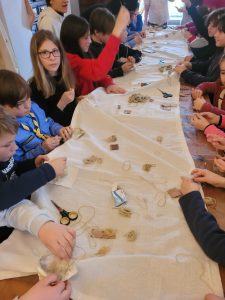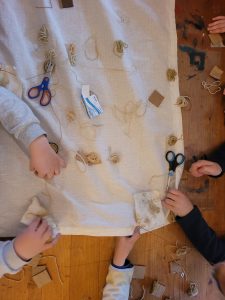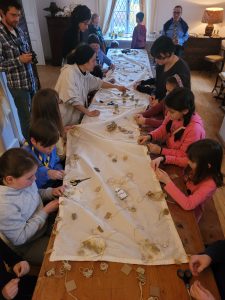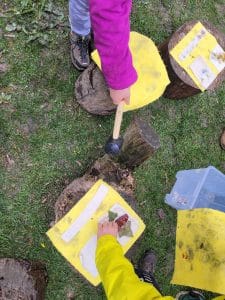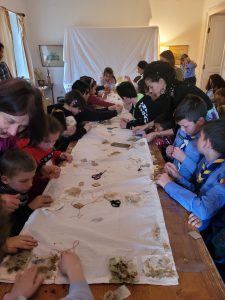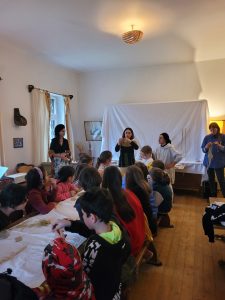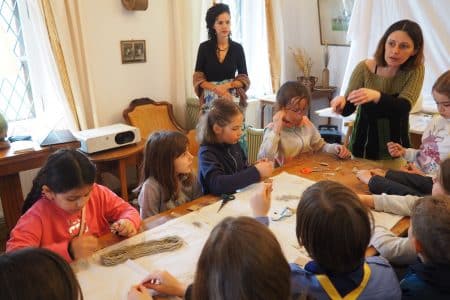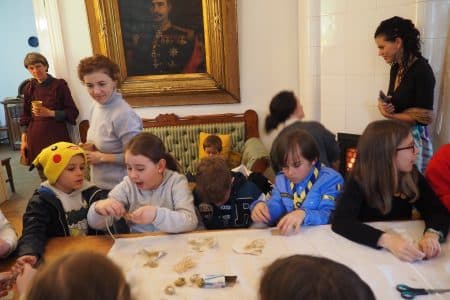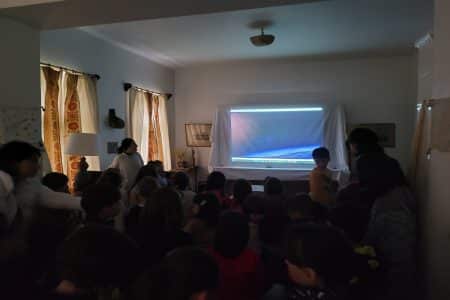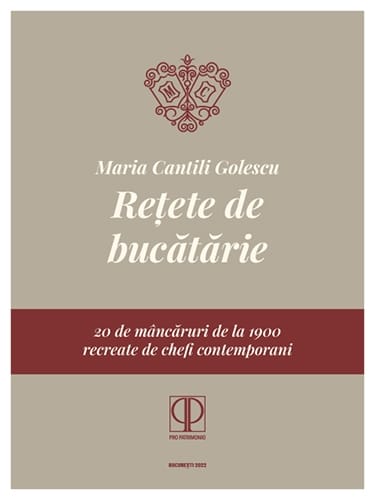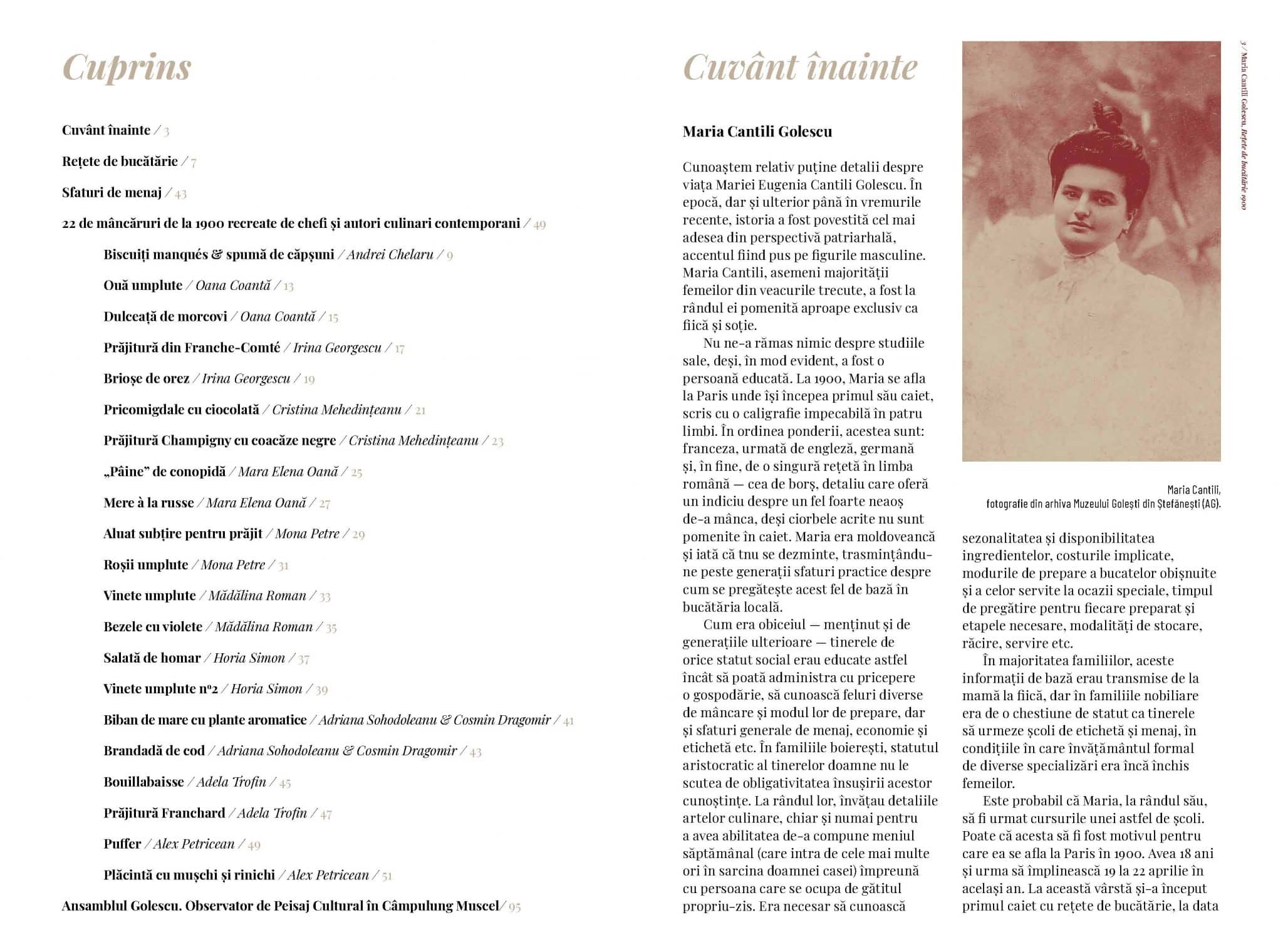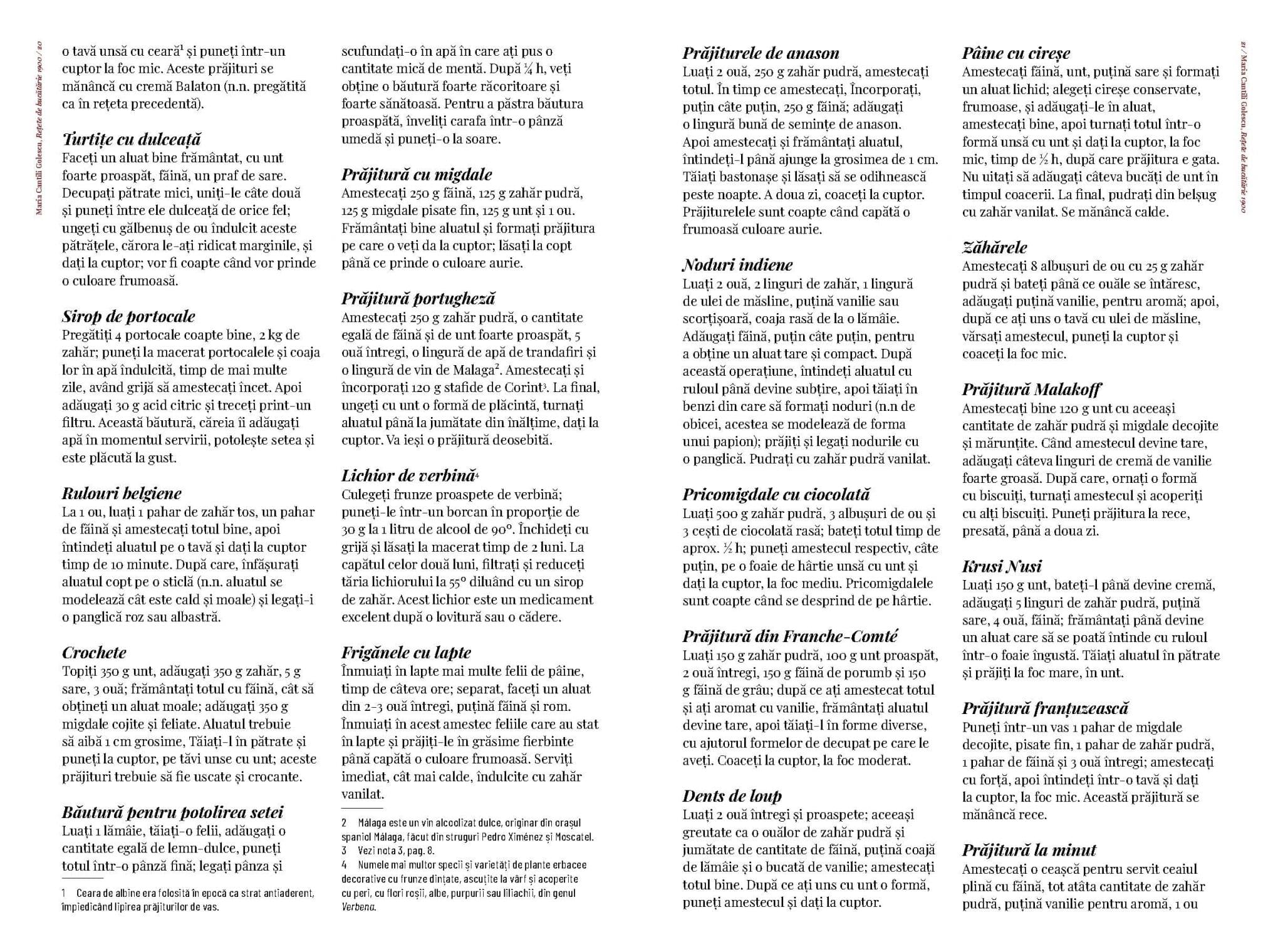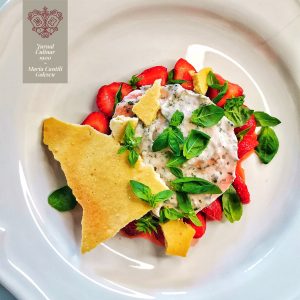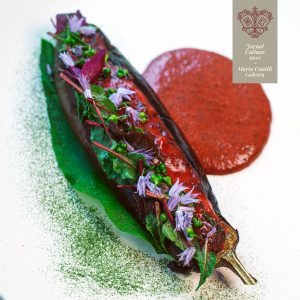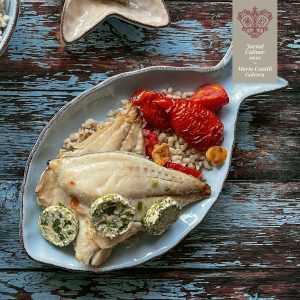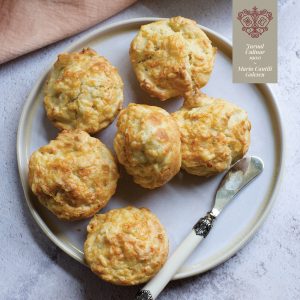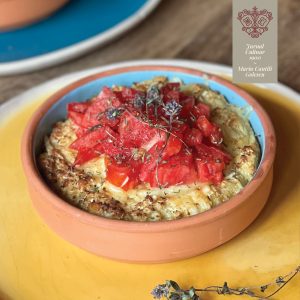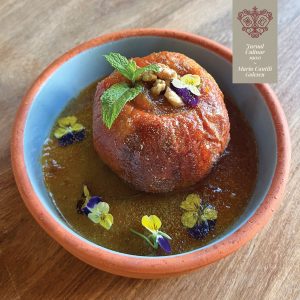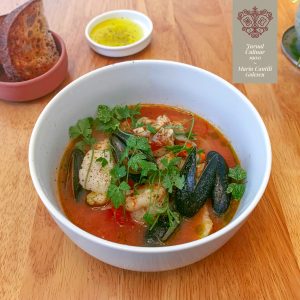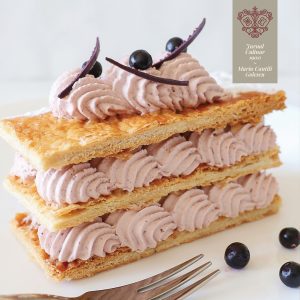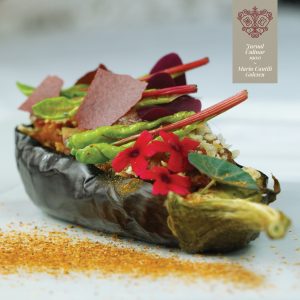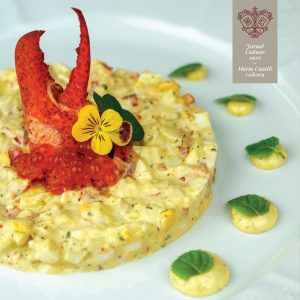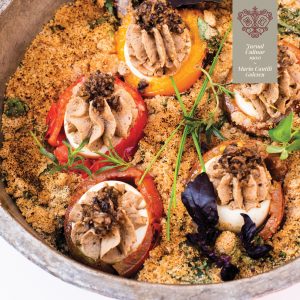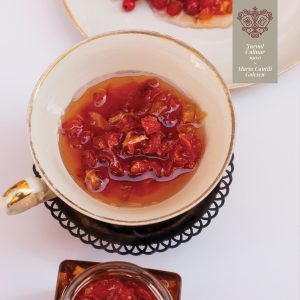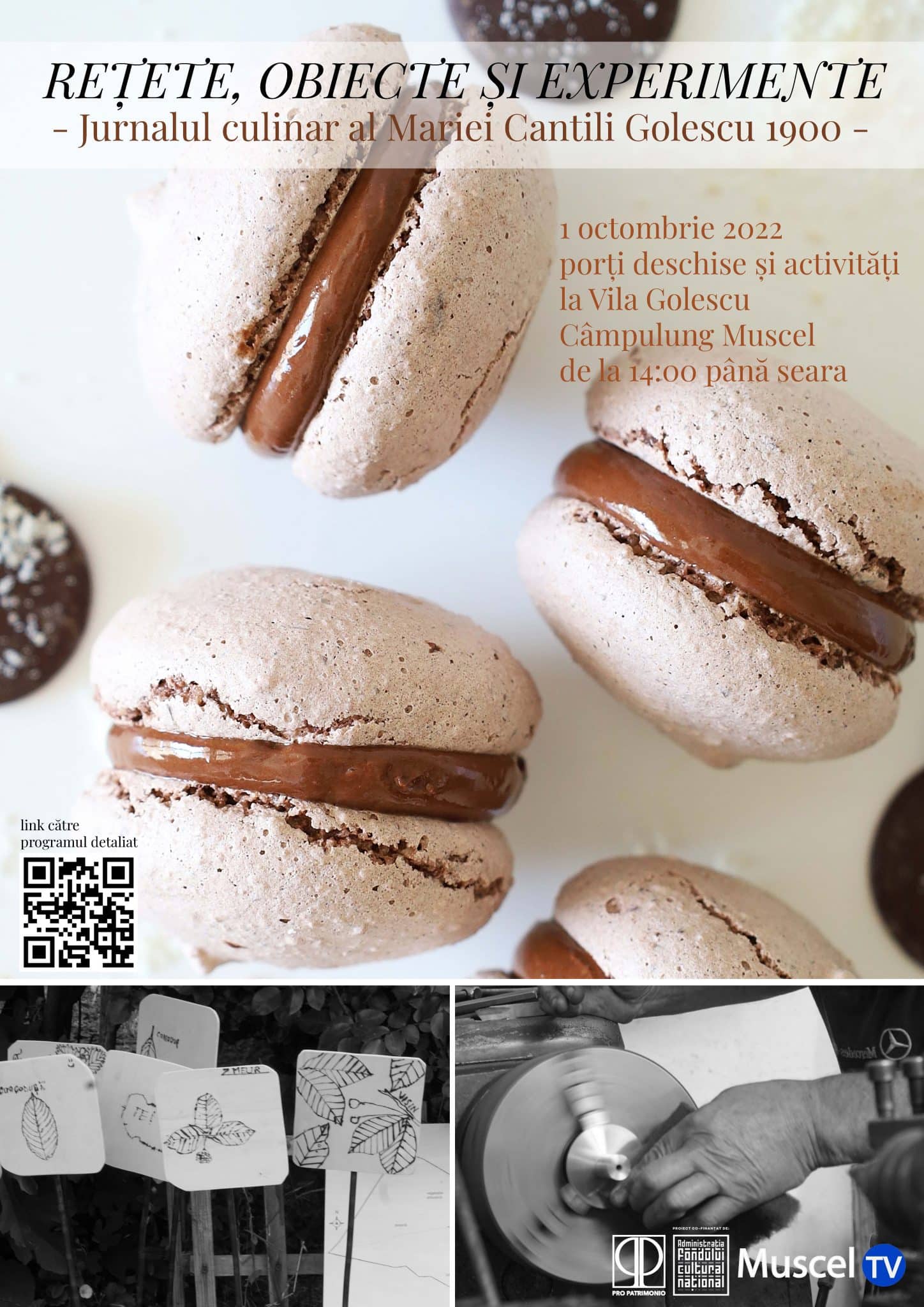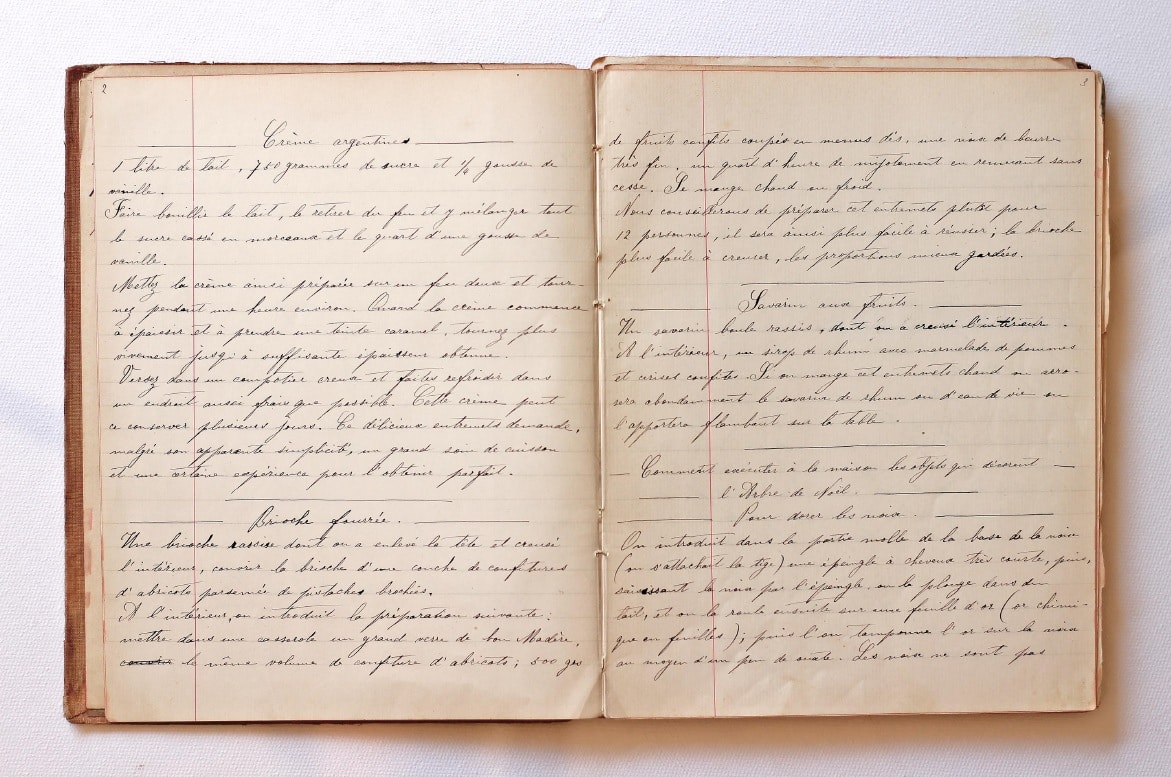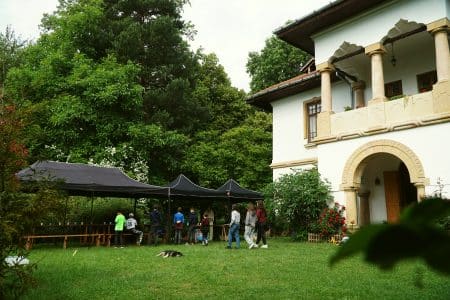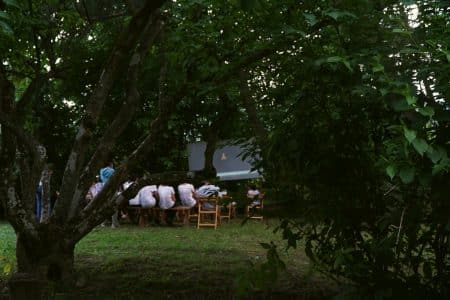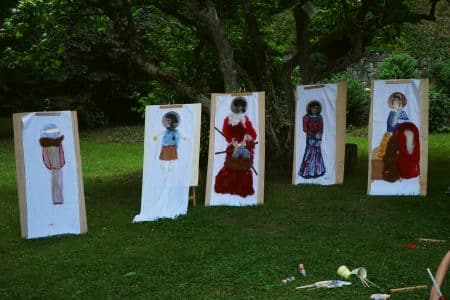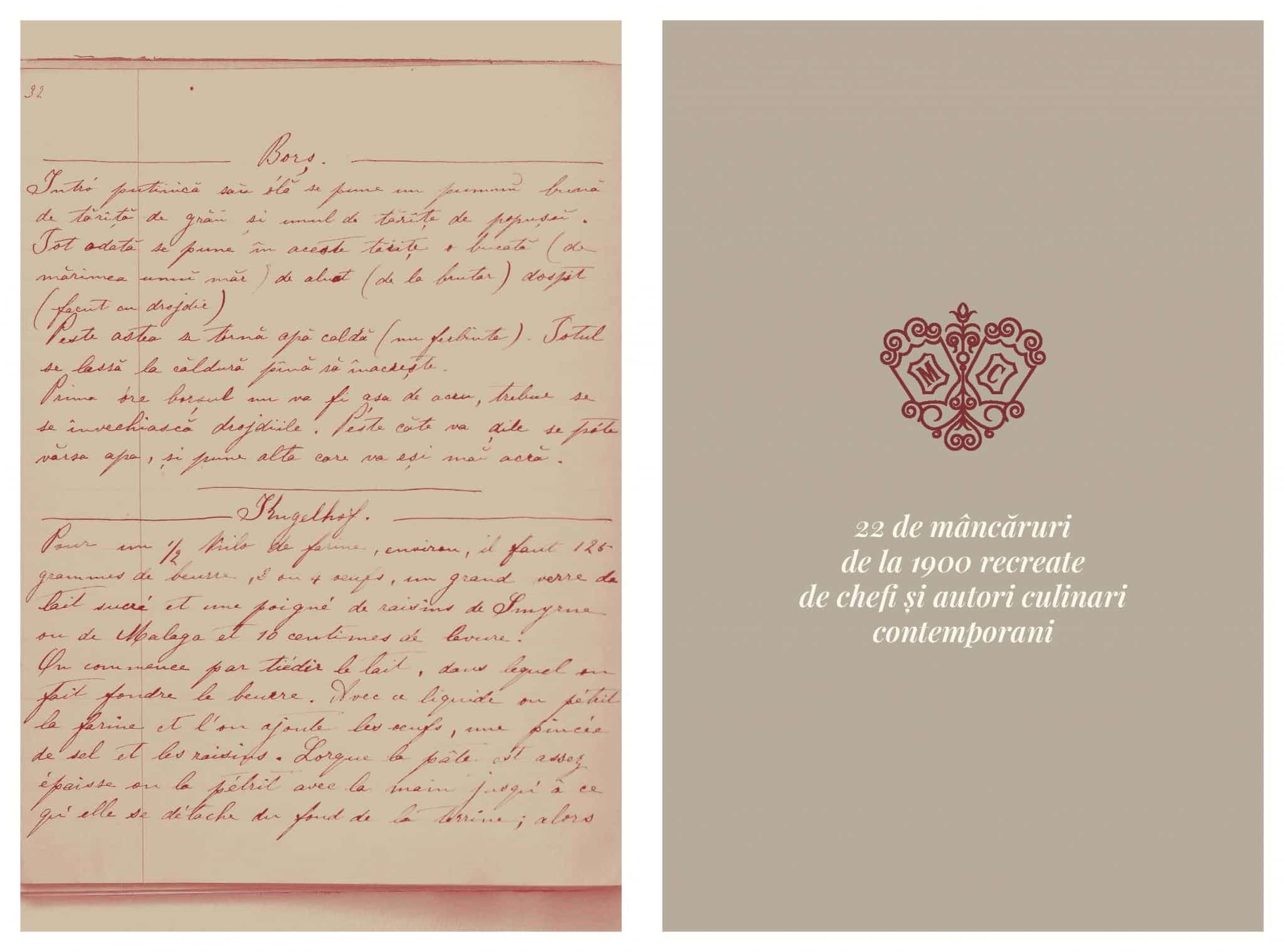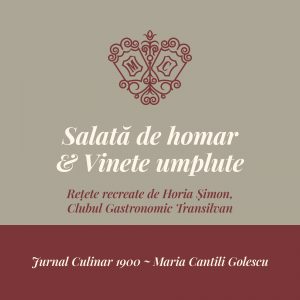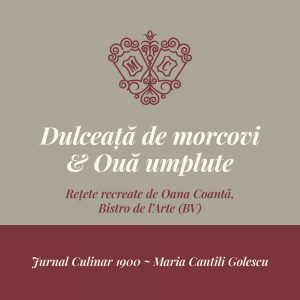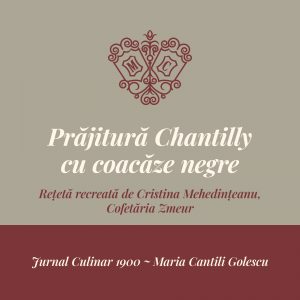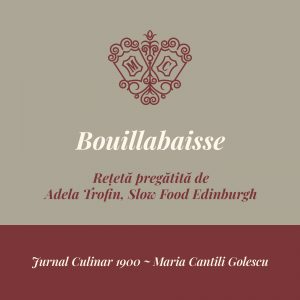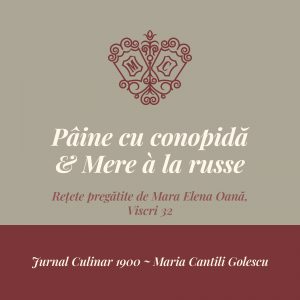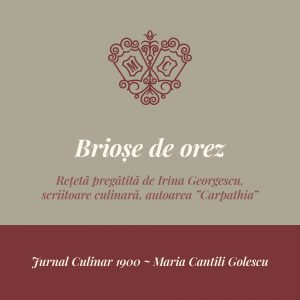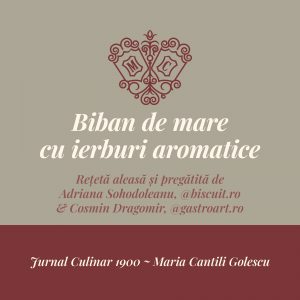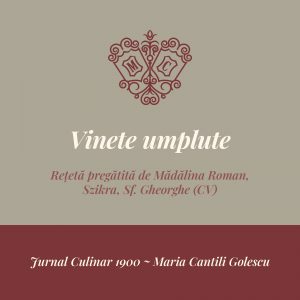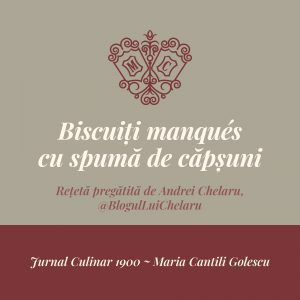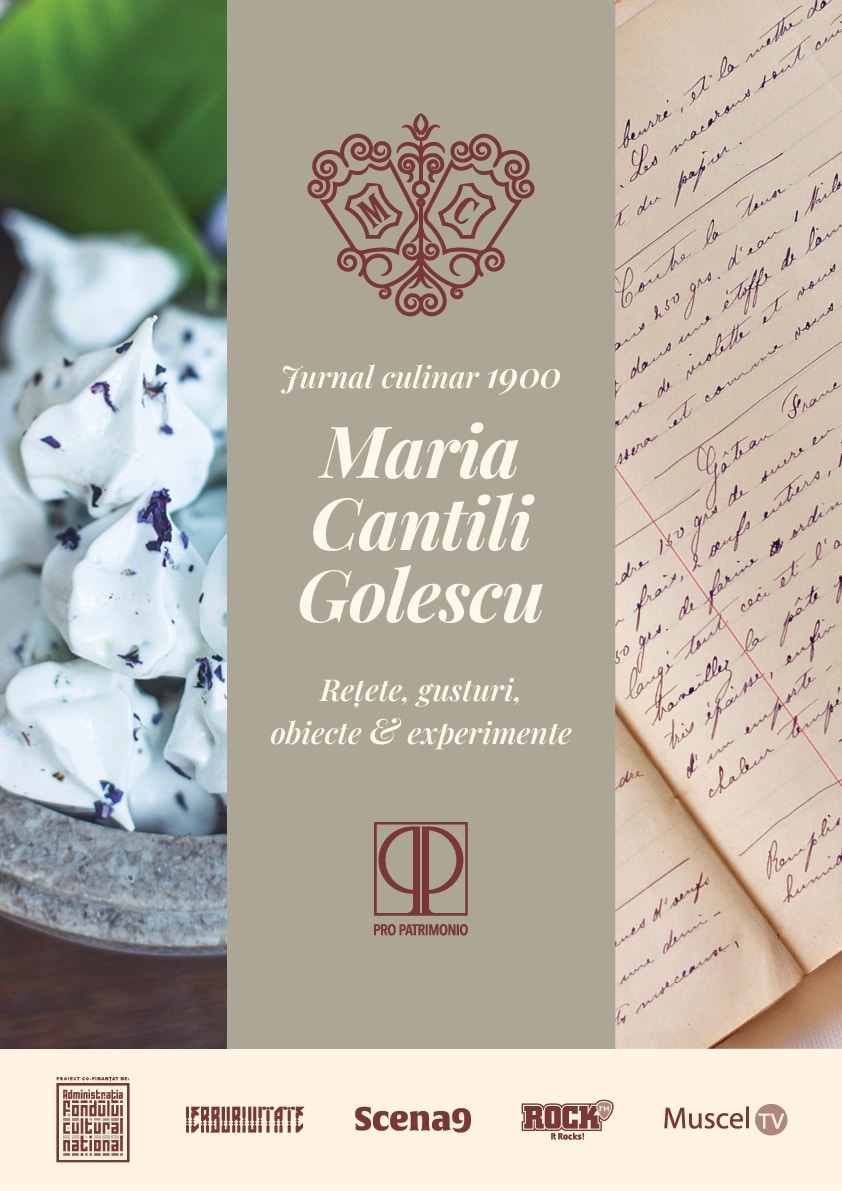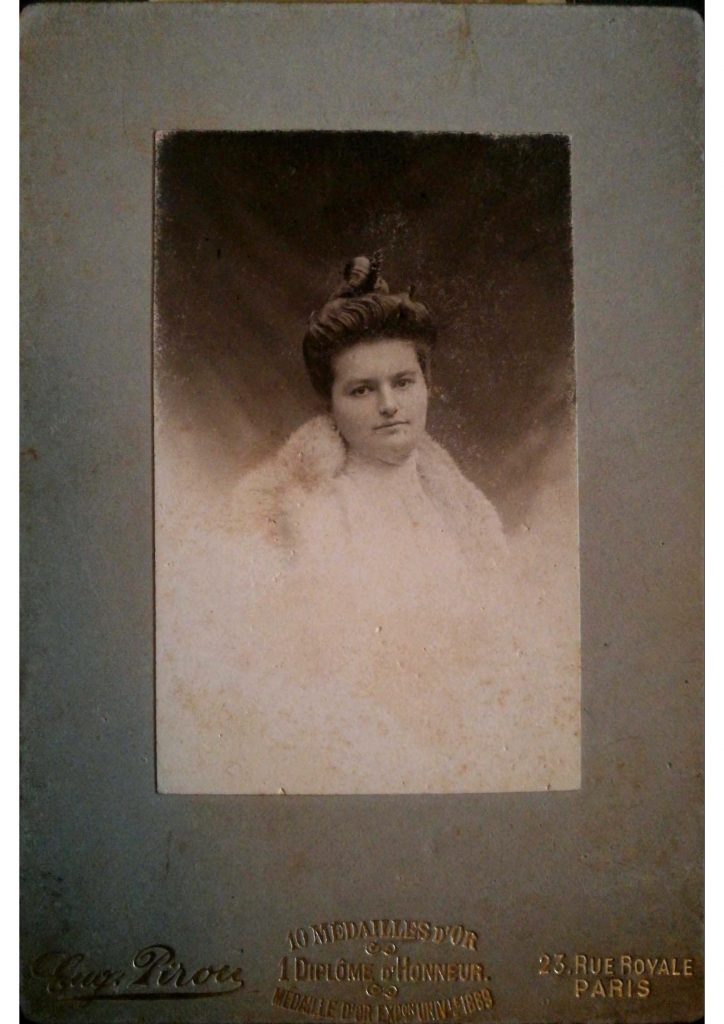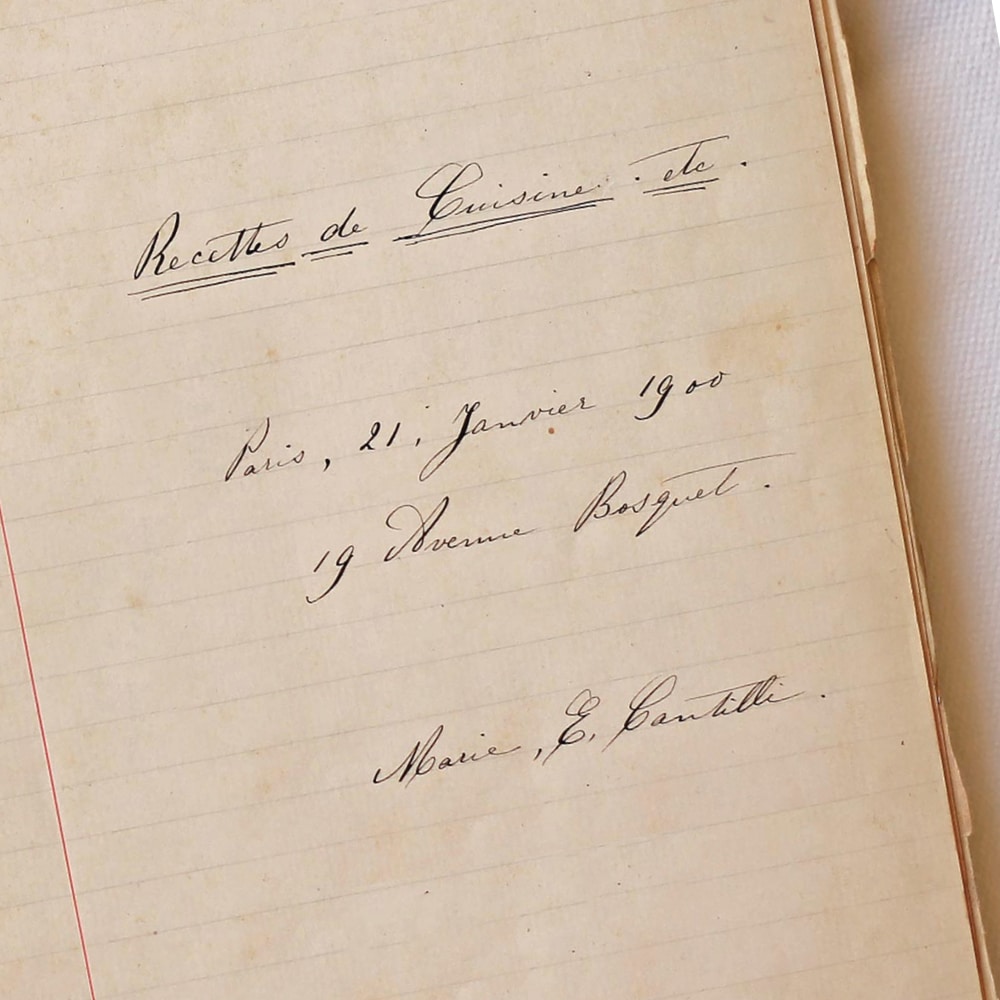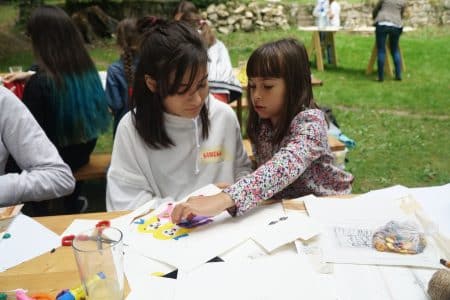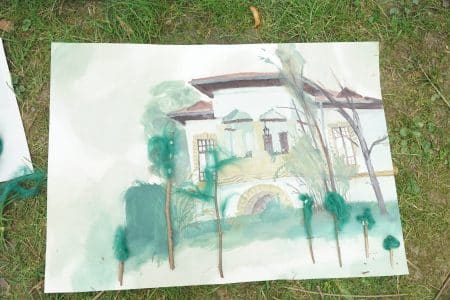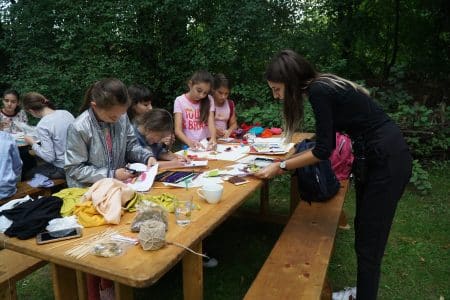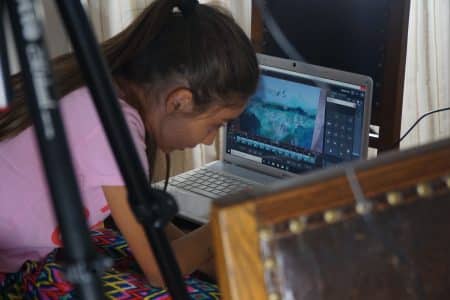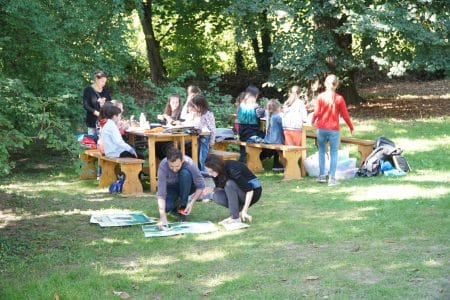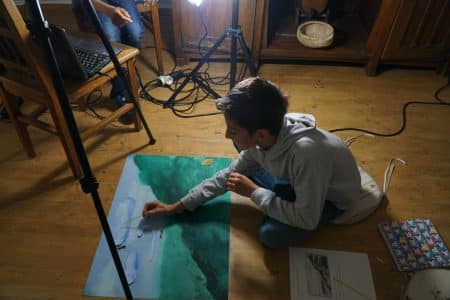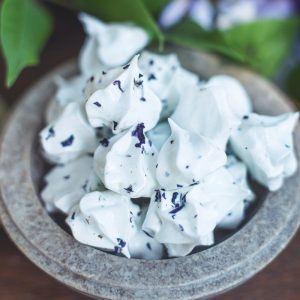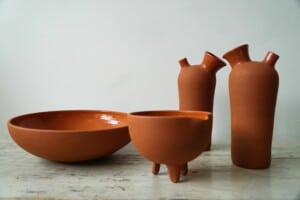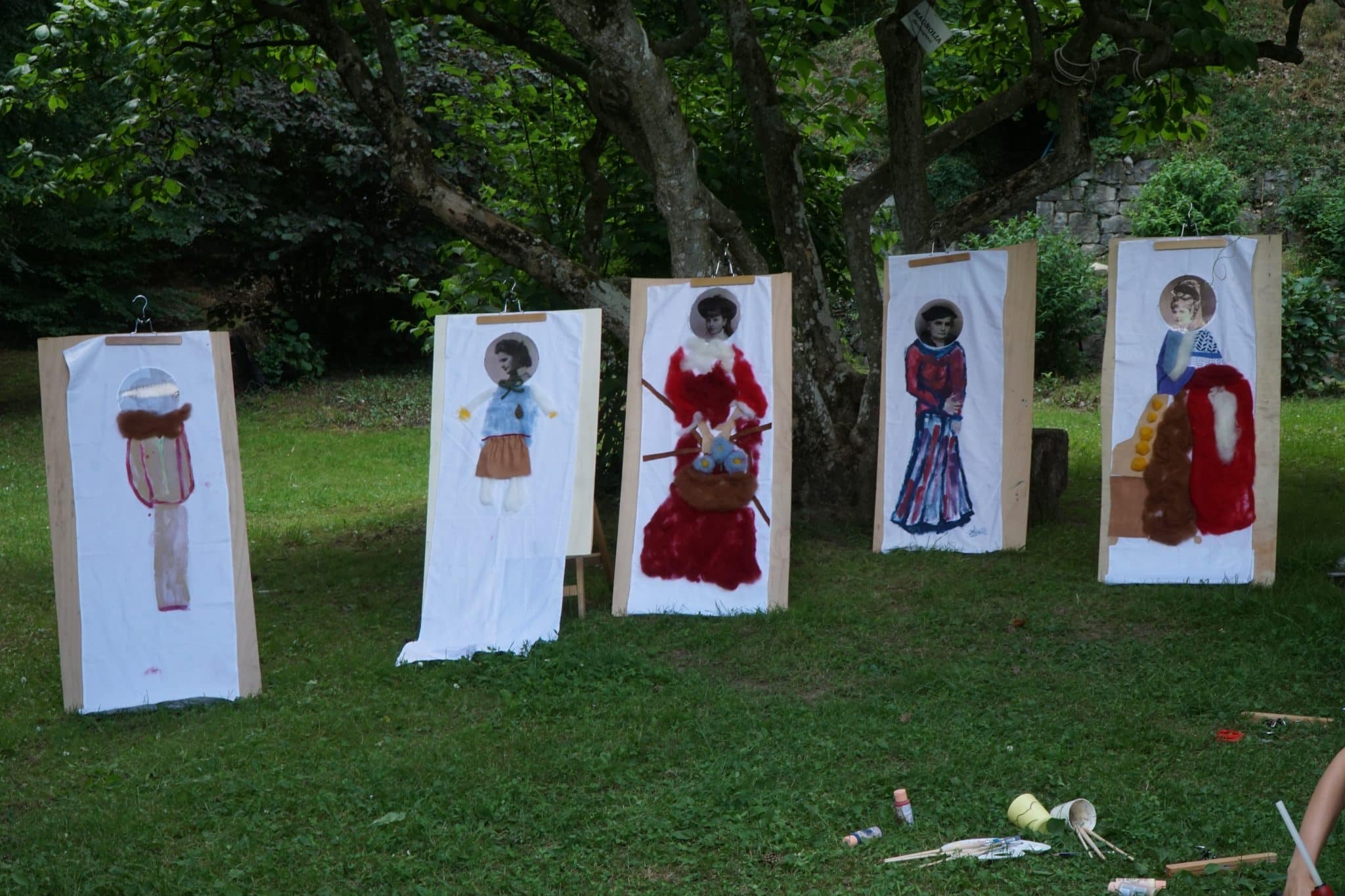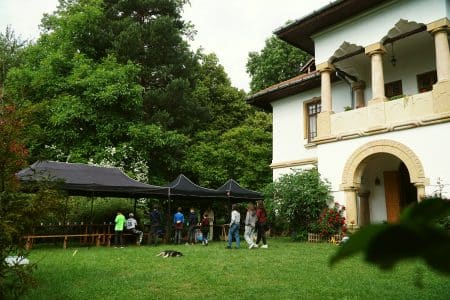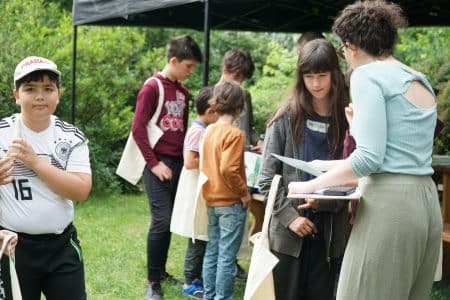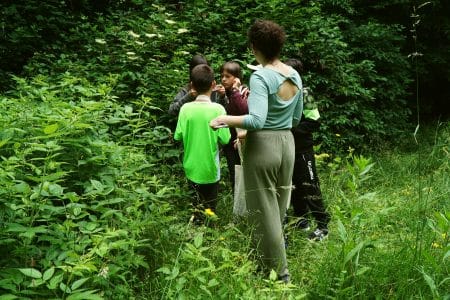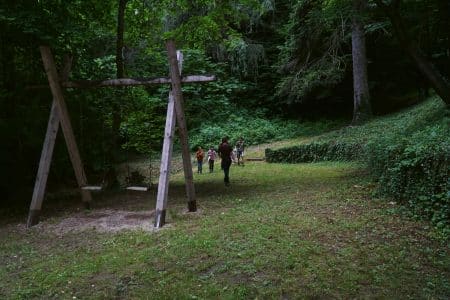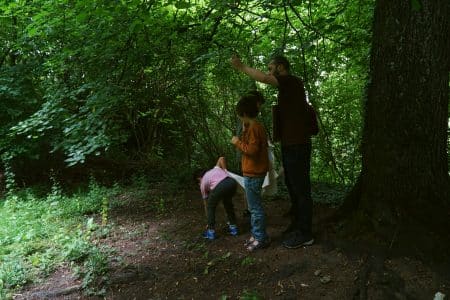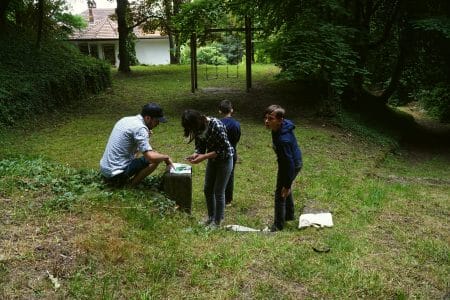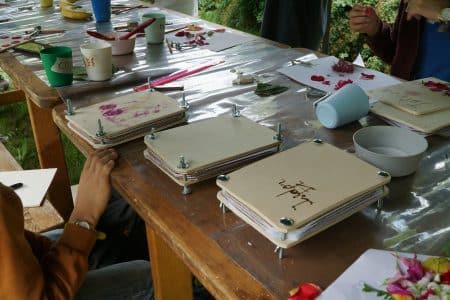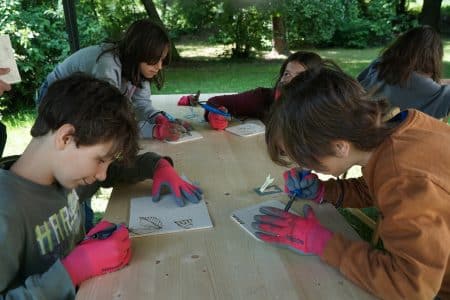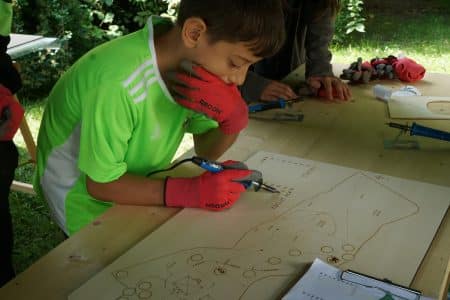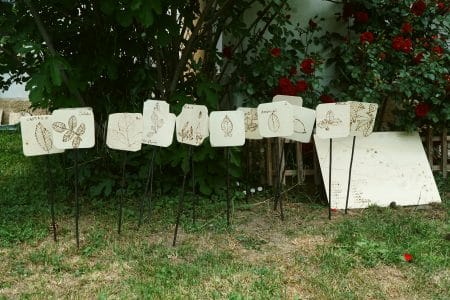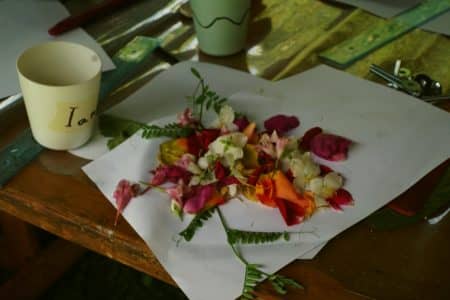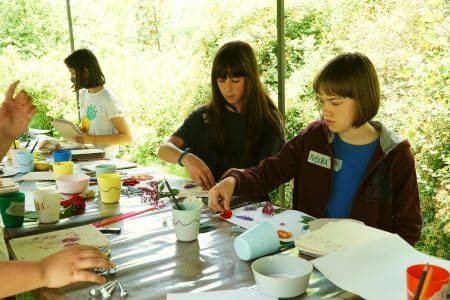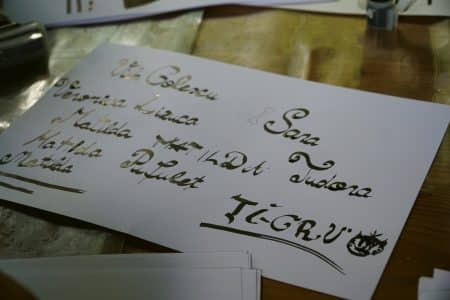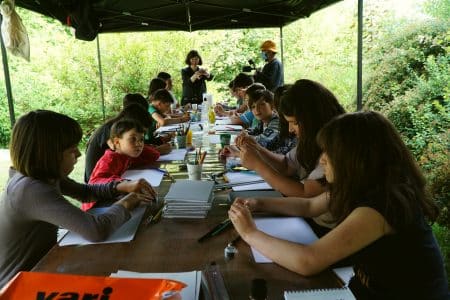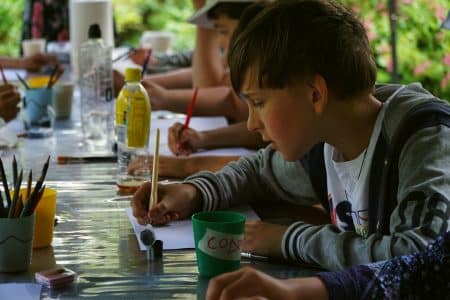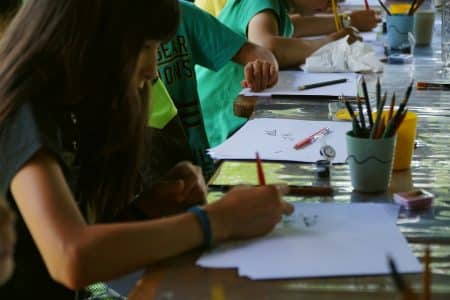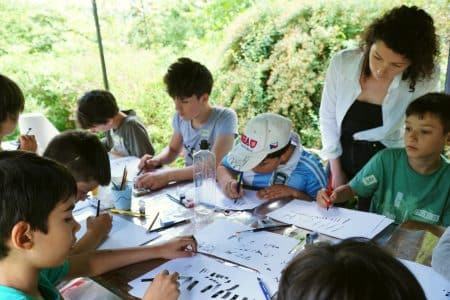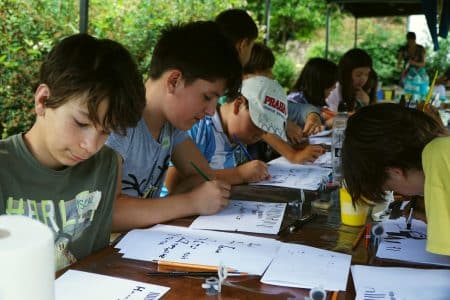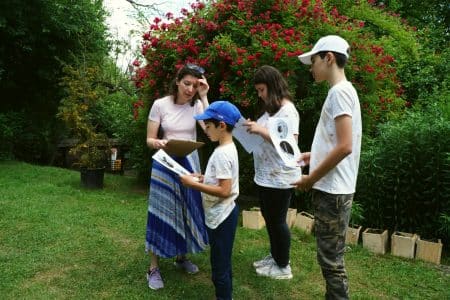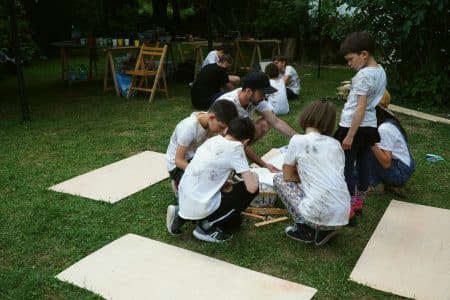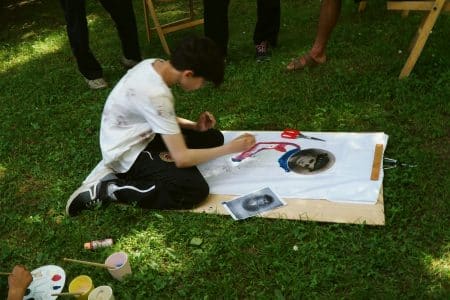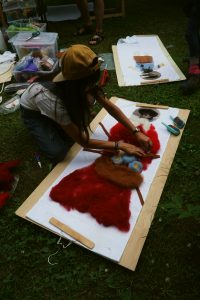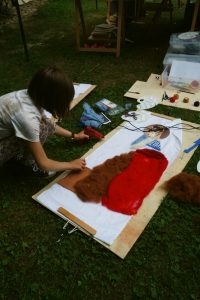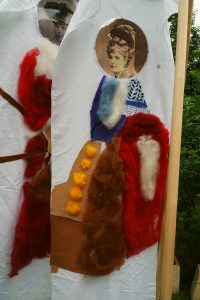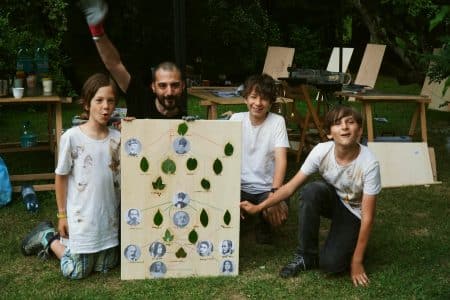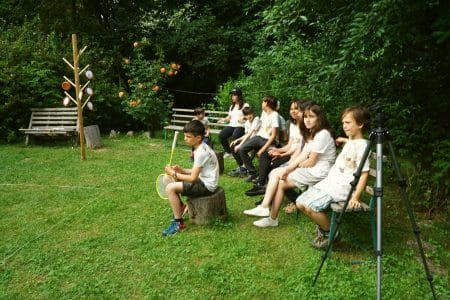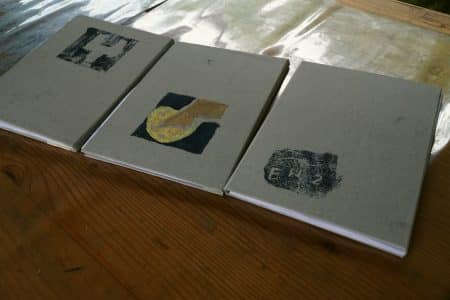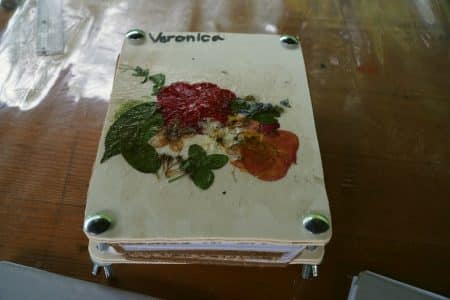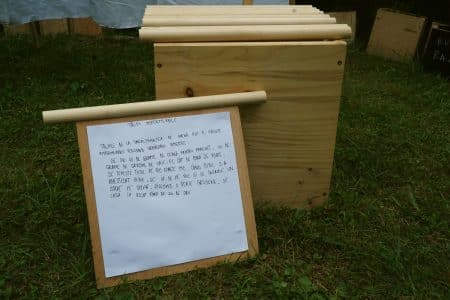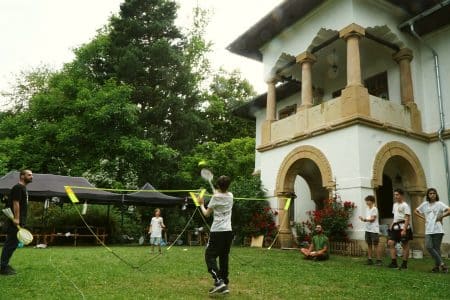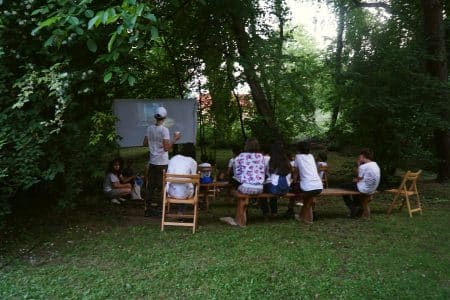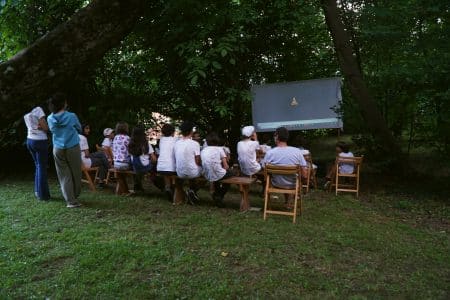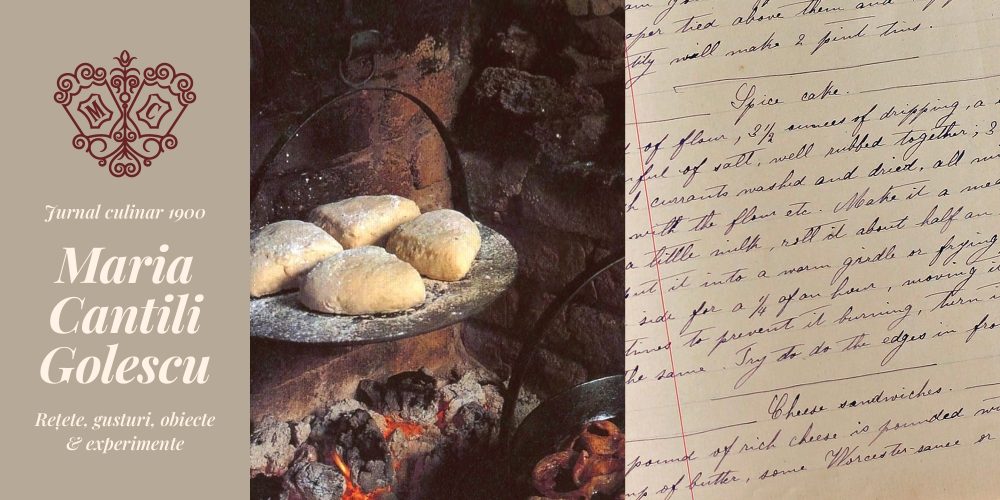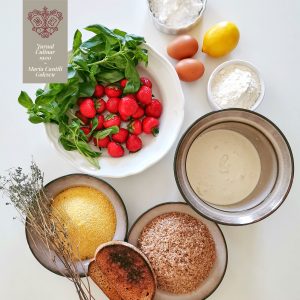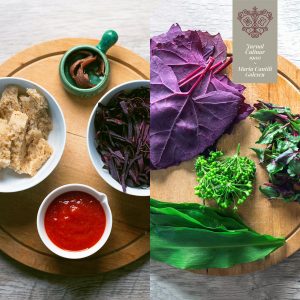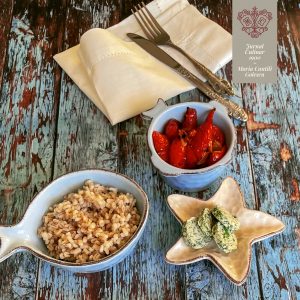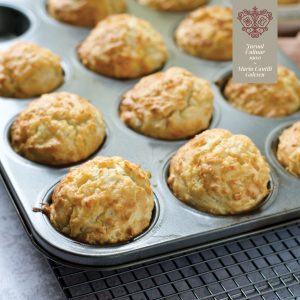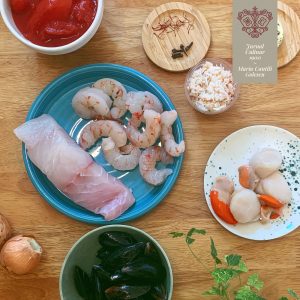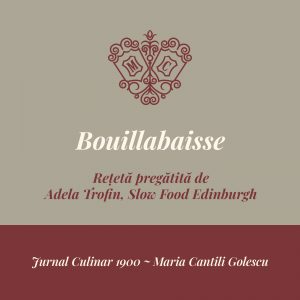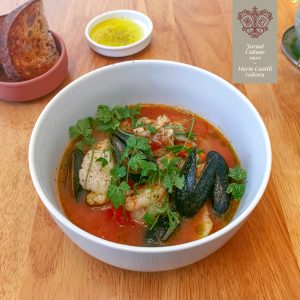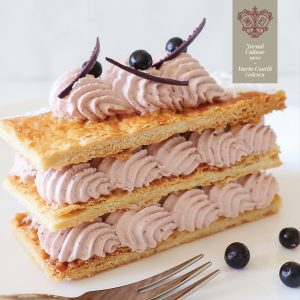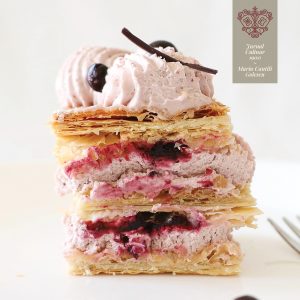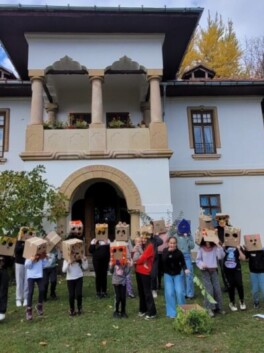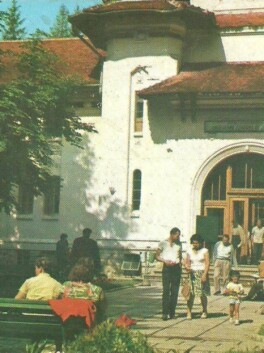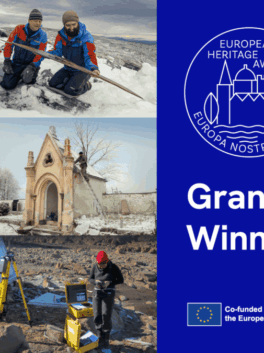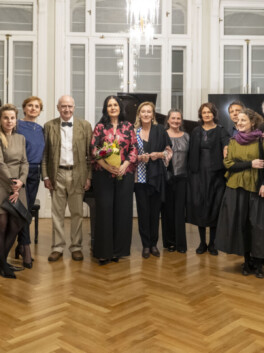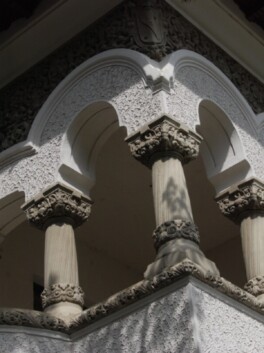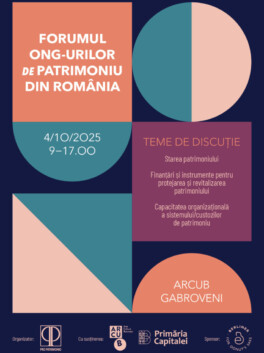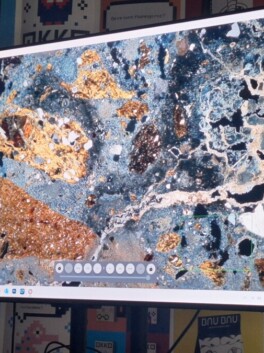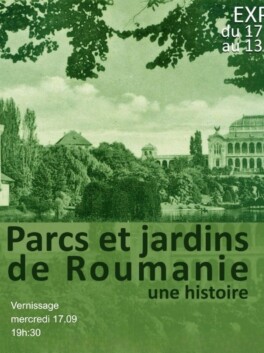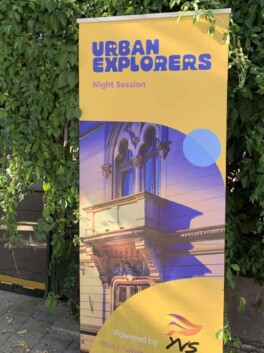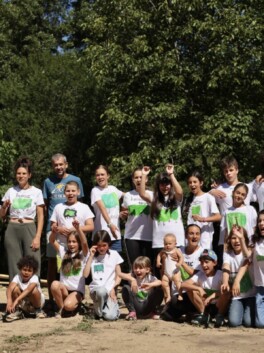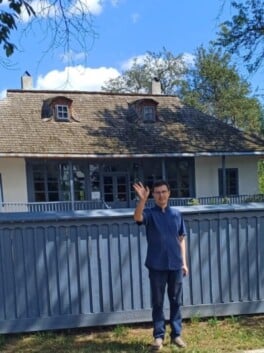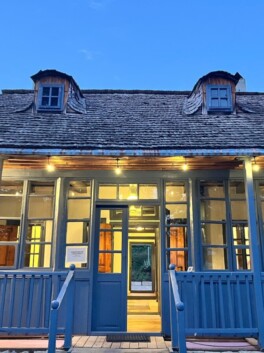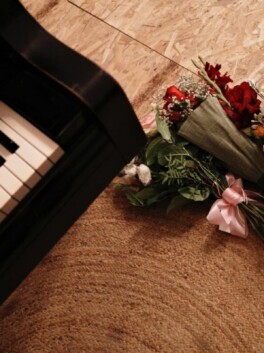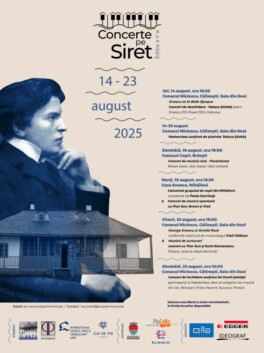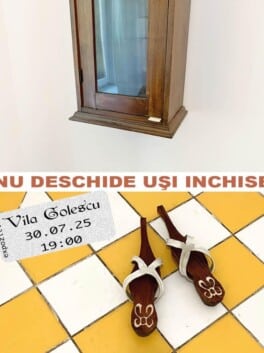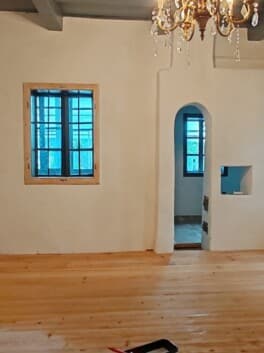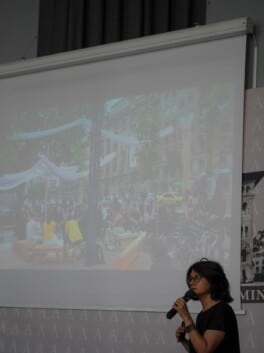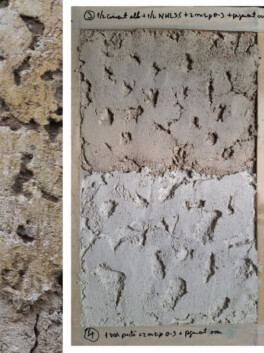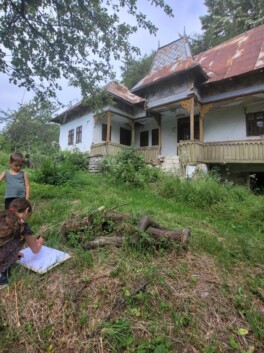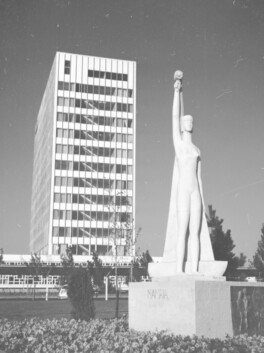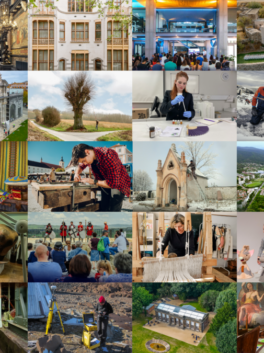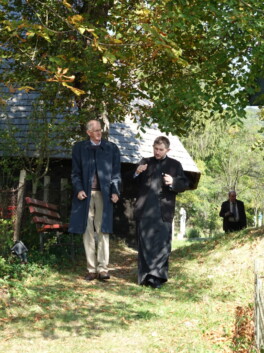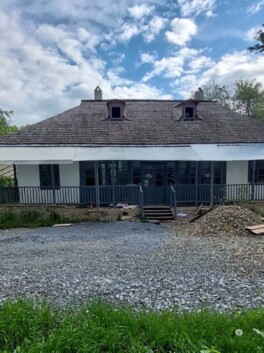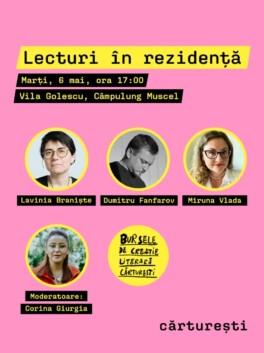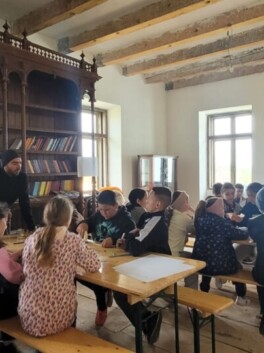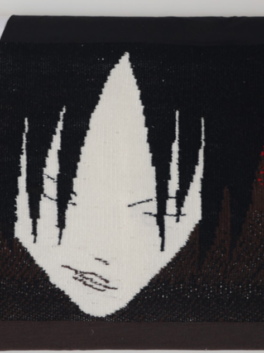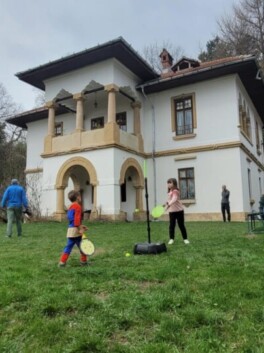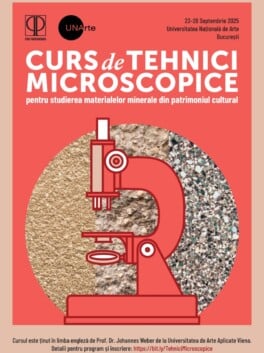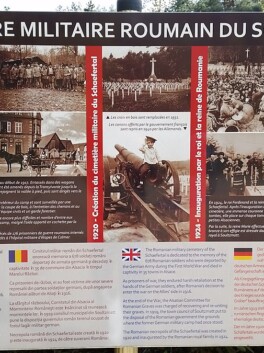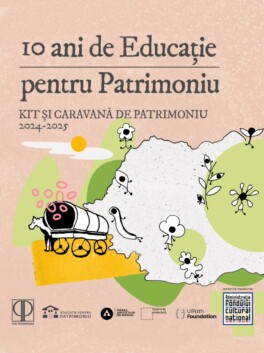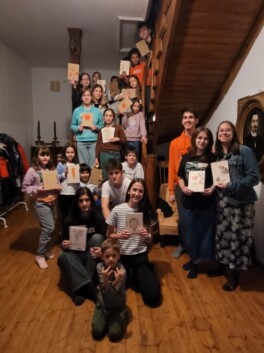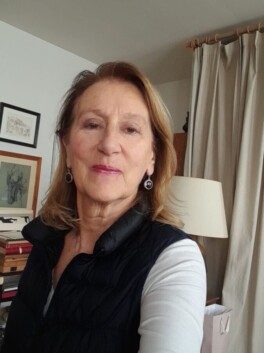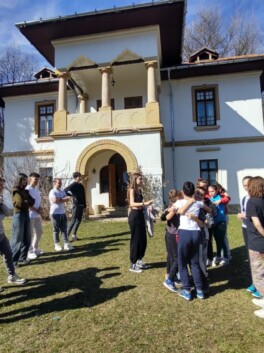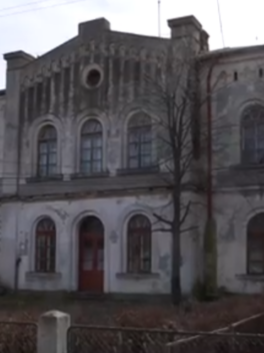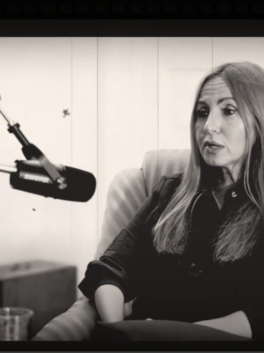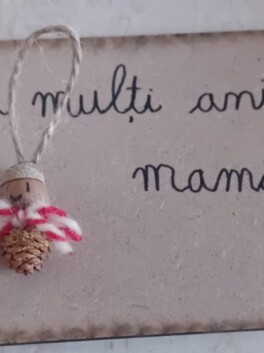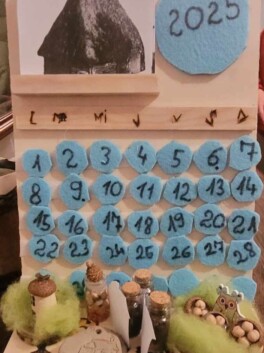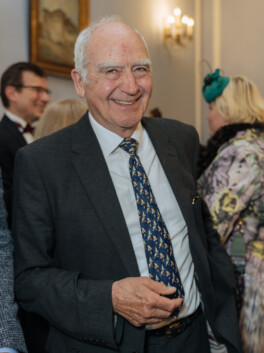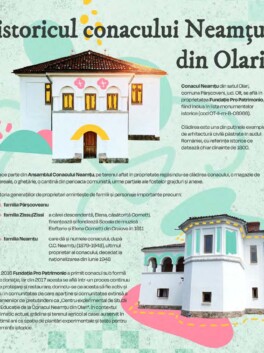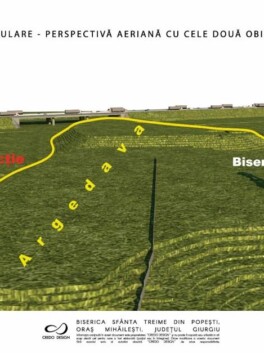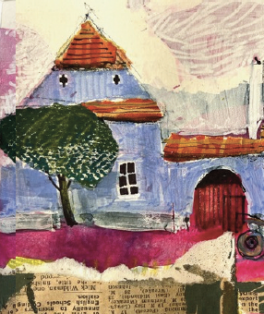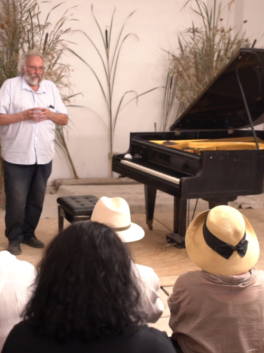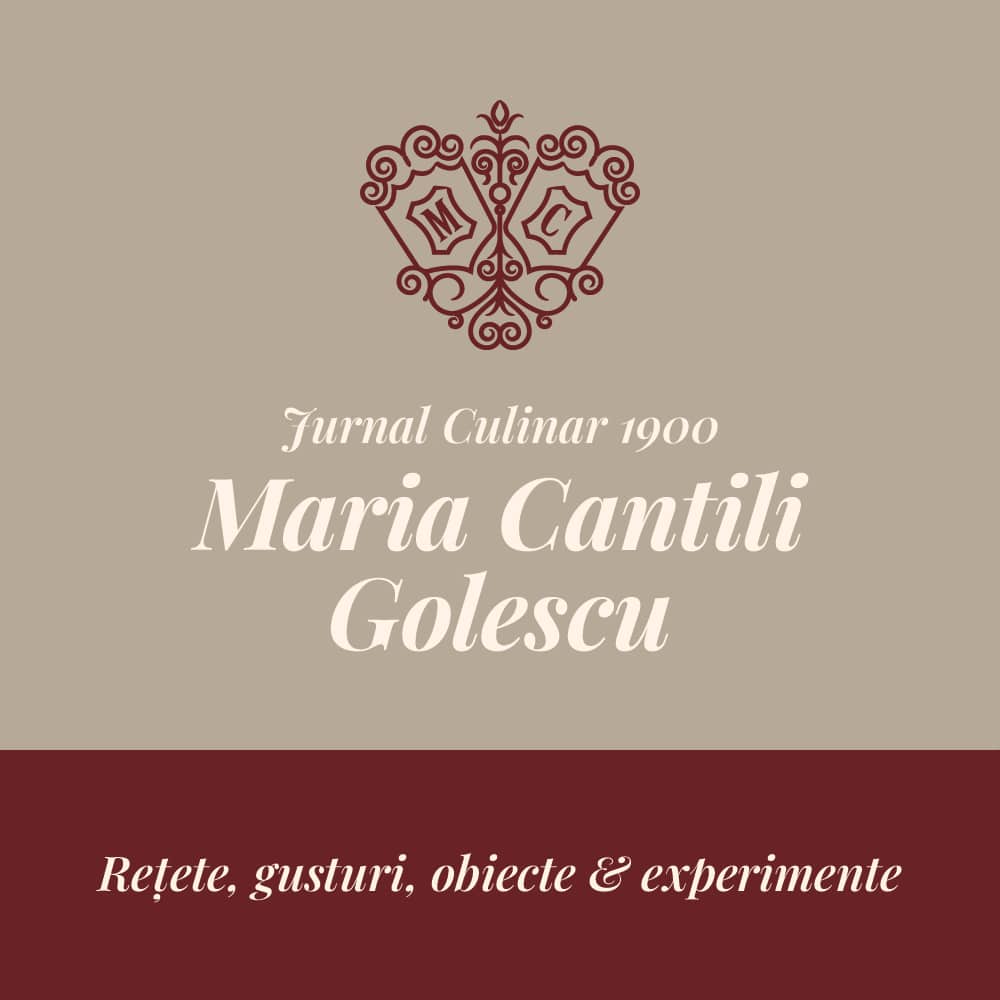
Ten Contemporary Experiments from Maria Cantili Golescu’s Culinary Recipe Book
The story of the notebook with “cooking recipes”, as Maria Cantili Golescu called it in 1900, enters a new stage in our project entitled „Maria Cantili Golescu – Culinary Recipe Book – recipes, tastes, objects and experiences”, carried out during this year aims to recover these fragments of taste over a century old, to give access to information for the public passionate about our culinary heritage and offer a small contribution to the enrichment of local gastronomic literature by publishing this notebook in a digital version that will be freely accessible in the ProPatromonio archive starting this autumn.
A multicultural notebook
Maria Cantili’s recipes were written in four languages at the beginning of the last century, in a splendid calligraphy specific those times, and describe an unexpectedly cosmopolitan way of cooking and dining, deeply influenced by Western European culinary trends, especially French, but also English, Iberian, German and Italian. It should not be forgotten that the author belonged to a privileged social category at the time, highly educated, multilingual, well-travelled and having had the opportunity to live in several European cities. The multiculturalism of the Golescu family, and perhaps of an entire local elite, is reflected in these glimpses of everyday life suggested by the way they ate, and reveals an interesting piece of Romanian gastronomic history from a decade not yet covered by other sources.
In the first part of the project, we carefully photocopied and digitised every page of the notebook, followed by many weeks working on transcribing the original recipes, translating them into Romanian and editing the texts so that the language became easy to understand for the contemporary reader.
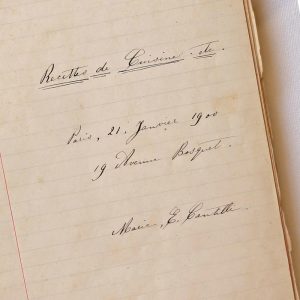
The first page of Maria Cantili Golescu’s notebook
Contemporary cooked recipes
This summer, we’re entering a new and even more spectacular phase of work, with 10 professional and amateur chefs joining the project to help us bring to life a series of recipes from the notebook. These recipes, narrated and cooked by our chefs, will be published in a new “cookbook”, with clearly explained texts and photos, also aimed for the public.
We have therefore invited Andrei Chelaru (Fragment, Cluj), Oana Coantă (Bistro de l’Arte, Brasov), Irina Georgescu (author of the cookbook “Carpathia”), Cristina Mehedințeanu (Horeca Culinary School, Bucharest), Mara Oană (Viscri 32), Mona Petre (Ierburi Uitate), Alex Petricean (Noua, Bucharest), Mădălina Roman (Szikra, Sf. Gheorghe), Horia Simon ( Transylvanian Gastronomic Club), the team of Adriana Sohodoleanu and Cosmin Dragomir (Gastroart) and Adela Trofin (Slow Food Edinburgh).
This summer, as our chefs venture out to bring these old recipes back to the table, we’ll share with you glimpses (in stories and pictures) of the process.
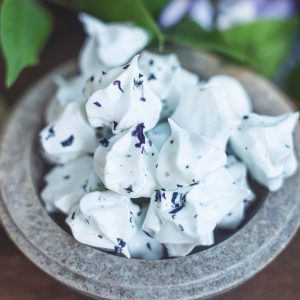
“Violet meringues”, cake prepared by Mădălina Roman (Szikra, Sf. Gheorghe) following the original recipe from Maria Cantili Golescu’s notebook
Andrei Chelaru
Browsing through Maria Cantili Golescu’s 1900 recipe book, Chef Andrei Chelaru – a frequent collaborator of several fine dining establishments in the country and winner of a Gault & Millau Romania award in 2019 – found inspiration to choose three of the recipes from the book and combine them in a unique, particularly tasty and contemporary dish.
“I was very delighted when I leafed through this precious book of recipes and it was hard to choose, as they were all very interesting. In the end, I chose three recipes: one for borsch, a dish with which I have a special relationship, as I originally come from Moldova, and which I often use, replacing lemon juice or vinegar. The second recipe is the biscuits manqués, which go perfectly with the 3rd chosen recipe, strawberry mousse. All three, paired on the same plate made a light, aromatic, tart-sweet dessert with a subtle home-made borsch flavour, perfect for hot summer days.”
Andrei, shared his encounter with these century-old recipes and deconstructed each working stage in very simple steps explained on his culinary blog, so that anyone can cook at home the three recipes, simple or combined as he creatively combined and served them.
Mădălina Roman
Mădălina Roman joined the project with two recipes chosen from Maria Cantili Golescu’s recipe book. We now present the first of them, a seasonal dish based on the classic recipe of stuffed aubergines, to which Mădălina has managed to give her own twist in a style that defines her.
Mădălina, who studied culinary arts at the “Paul Bocusse” institute in Lyon, is currently head chef at “Szikra” in Sfântu Gheorghe (CV), passionate about the “secrets” of food chemistry, old recipes and wild plants, but also an active promoter of sustainability in gastronomy and respect for nature. “Szikra” quickly became a landmark for new Romanian gastronomy, surprising both by reinterpreting old recipes and by the original combinations and innovative techniques.
About this dish, she told us: “Since it’s their season, and this summer is busy with the publishing of Maria Cantili Golescu’s Culinary Diary, I chose to play with a stuffed eggplant recipe. Following the 1900 recipe, I slightly adjusted both the ingredients and the cooking technique. Beside very young beet leaves, I added orach leaves, and green onions and ramson in the stuffing. In addition, to soften the bread, I used a reduction of borsch and a little vegetable stock soup. Half of the sauce I left with the leaves inside and the other half I blended into a thin sauce placed on the plate next to the baked eggplant. At the end, I added green ramson fruits and onion blossoms which completed the dish wonderfully adding a crunchy touch.”
Adriana Sohodoleanu & Cosmin Dragomir
Inspirați de vară și ingrediente de sezon, echipa formată din Adriana Sohodoleanu și Cosmin Dragomir a ales și gătit din caietul de rețete de la 1900 al Mariei Cantili Golescu o foarte potrivită mâncare estivală — biban de mare cu ierburi aromatice. Felurile cu pește erau favorite în multe din casele mari ale epocii, iar Vila Golescu din Câmpulung Muscel n-a fost mai prejos. Se prepara o paletă poate surprinzător de variată de specii de pește și crustacee, iar mâncărurile erau puternic influențate de bucătăria franceză și mediteraneană, cu siguranță un gust căpătat în călătoriile cuplului în Franța, dar și sub tendința generală a epocii, în care ”la cuisine française” se impusese ca idealul gastronomic pentru orice familie cu pretenții.
Maria Cantili scria: ”Peștele, evident foarte proaspăt, trebuie spălat, curățat și eviscerat. Înfășurați-l cu o foaie de hârtie unsă bine cu unt. Coaceți la cuptor până capătă o culoare frumoasă. Pregătiți, în acest timp, un vas foarte cald, în care puneți peștele scos din hârtie. Sărați și decorați atât peștele cât și vasul cu unt amestecat cu plante aromatice. Untul se va topi pe jumătate, așa și trebuie. Serviți fierbinte. Coacerea trebuie supravegheată foarte bine; focul nu trebuie nici foarte tare, nici redus. În aceasta constă tot secretul.”
Adriana Sohodoleanu are un doctorat în ”noua bucătărie romanească” și scrie despre mâncare, istorii și trenduri culinare pe biscuit.ro, implicându-se adesea în proiecte felurite de istorie gastronomică și chiar în ceea ce s-ar putea numi reenactment culinar. Ea a abordat această rețetă scrisă acum mai bine de 120 de ani dintr-o perspectivă cât mai apropiată de textul original, detaliind tot procesul de lucru, ingredientele și etapele într-un articol cuprinzător și explicativ, ce poate fi citit aici: https://biscuit.ro/2022/07/08/biban/
Cosmin Dragomir este istoric culinar amator, fondatorul editurii Gastroart, unde a publicat o serie de cărți de bucate istorice, unele într-o ediție nouă la mai mult de un secol și jumătate de la prima apariție. Cosmin este și inițiatorul sau co-inițiatorul mai multor proiecte de cercetare și aducere în atenția publicului larg a patrimoniului culinar național, prin articole, podcasturi și evenimente conexe.
Irina Georgescu
We are delighted to benefit within the project “Maria Cantili Golescu’s Culinary Diary – recipes, tastes, objects and experiments” from the vision of Irina Georgescu, culinary writer and author of the book “Carpathia”. Irina has published her cookbook in the UK, presenting to the British public, in a specific format, Romanian food as it is prepared in households in various regions of the country. Since then, “Carpathia” has been translated into several languages, taking our recipes overseas. In addition, Irina is preparing a new book to be released this autumn called “Tava”, a collection of tray-cooked dishes inspired by rural and contemporary cuisine.
Browsing through Maria Cantili’s notebook from 1900, she chose two recipes for cakes, of which we present today the delicious rice muffins.
The recipe goes like this: “Two cups of cold cooked rice, 570 g flour, 1 tsp salt, 1 tsp sugar, half a teaspoon baking powder or yeast, 285 ml milk, 3 eggs. Mash the rice to remove lumps and add the other ingredients. Bake in muffin tins for 15 minutes.”
For their preparation, Irina followed closely the tips from the original recipe, adding just a little personal twist and detailing the method on her website – link
Mara Elena Oană – Viscri 32
Born in Deva, in a multicultural family, with Romanian and Hungarian grandparents from Maramureș and Hunedoara, Mara Elena Oană worked for over 10 years as a lawyer in Bucharest, before leaving everything and moving to Viscri, a UNESCO-listed village. Here, together with her partner, they founded the Viscri 32 project, a small retreat with a strong gastronomic component. Together they restored an old Saxon house using local craftsmen and converted the former barn on the property into a Slow Food restaurant.
Mara is focused on using seasonal ingredients grown by local family producers in the region, as well as documenting and promoting recipes specific to Transylvania.
Involved in the project “Maria Cantili Golescu’s Culinary Diary – recipes, tastes, objects and experiments”, Mara chose to recreate two recipes based on easily accessible seasonal ingredients: „cauliflower bread” and apples a la russe, two dishes cooked in the oven and served in earthen bowls.
As Mara recently posted an explanatory video about “cauliflower bread” on the Viscri 32 account, today we present this special dessert served with butter, apricot jam, toasted walnuts and cherry palinca, following closely Maria Cantili’s recipe from 1900:
” Remove the apple peel and scoop out the interior. Put them in a deep, ovenproof dish and add butter and powdered sugar. Place in the oven on low heat. Then arrange the apples in a bowl and drizzle them, while still warm, with a sauce made from apricot marmalade, mashed and diluted with 2-3 tablespoons of kirsch. This dish is served warm or, conversely, very cold.”
Adela Trofin
As we do at the beginning of every weekend this summer, we propose a new and appetizing seasonal dish inspired by Maria Cantili Golescu’s 1900 cookbook. Our guest Adela Trofin has chosen to recreate a famous Provençal fish soup, Bouillabaisse, found in the pages of this notebook: “In a pot, add chopped onions, tomatoes, parsley, thyme, bay leaves, garlic and cloves, 700-800 g of fish and shellfish cut evenly. Season generously. Sprinkle with saffron, pour in a glass of oil, two decilitres of white wine and finish by adding fish stock or water to cover half the fish. Simmer over high heat for 15-18 minutes. Arrange the fish on a platter, ladle the soup into a soup tureen in which you have also placed pieces of bread.”
Following Maria Cantili’s advice closely, Adela says: “For me, this soup is not Provençal, it’s not Scottish, it’s not Romanian. It’s comfort and warmth. It has a bit of the memory of Romanian fish soups, but it also intensely reflects the feeling that food is relaxation and connection. Each time I prepare it, its taste and texture are slightly different, depending on what I find at the fish market that day, but its warmth and intensity remain the same, making it one of my favorite dishes.”
Adela Trofin was born in a small town in northeastern Romania, into a family with Romanian, Austrian and Greek roots. She learned from her grandmother about home-cooked meals and stories about seasonal ingredients, either grown or gathered from the surroundings, but also about values closely connected to conviviality and loyalty to the natural course of nature, sustainable agriculture and small local producers with minimal environmental impact. Involved in the Slow Food movement since 2012, Adela has been the leader of the Slow Food Iași Convivium for 6 years contributing among other things to the development of the first ASAT (for supporting peasant agriculture) consumer group in the region. Relocated to Scotland, Adela quickly joined the Slow Food Edinburgh board, getting involved in the local effort to bring back to light forgotten or lost ingredients of Scottish culinary history and culture, without forgetting her origins and concern for Romanian gastronomy.
www.adelicii.ro
Cristina Mehedinţeanu
Following her chef training course, Cristina Mehedințeanu worked in several prestigious London restaurants and bakeries, such as Ottolenghi and Harrods, where she gained experience as a pastry chef. Back in the country, she became a trainer and instructor for pastry chefs and confectioners at the Horeca School in Bucharest, where she conducts pastry chef qualification trainings and masterclasses. Recently, she opened her own business in the capital, Cofetăria Zmeur.
Cristina chose from Maria Cantili Golescu’s notebook two cakes dating back to 1900, giving them even more sparkle and contemporary flair: a Chantilly cream cake with blackcurrants, great seasonal fruits, and a recipe for chocolate pricomigdalas to which she added a decadent ganache.
About the first recipe, she writes: “I love blackcurrants. They are hardly ever used in confectionery. More popular are blueberries, although they don’t have much taste or flavor. This recipe uses blackcurrants to the full, in a sweet-sour marmalade, a thick sauce that naturally sweetens and colors a creamy Chantilly with whipped cream and mascarpone for decoration. A delight!”
Both dishes are detailed on Cristina’s website, cristinamehedinteanu.ro, where, in addition to the text of the original recipe, the ingredients used and all the working steps are explained in detail, allowing anyone to try to reproduce this culinary jewel.
Horia Simon
Horia Simon was born into a family of “barkeeps” and has been in contact with the world of gastronomy since childhood. He believes he left one kitchen behind to pursue his studies, but returned back into the kitchen. He did his apprenticeship in a restaurant in Barcelona, then, back home, he gained experience travelling all over the country, through Cluj, Târgu Mureș, Timișoara, Bistrița and Baia Mare. He is the founder and (co-)owner of several projects in the gastronomic area, from consulting activities to the production of canned food and dishes according to traditional techniques (Les Mignonnes de Simon, Foc și Pară – Afumatoria de Oraș), lecturer at the American Hotel Academy in Brașov (Taste Academy), active member of Slow Food Transylvania and co-founder of the Transylvanian Gastronomic Club, an NGO that researches and preserves the Transylvanian gastronomic heritage.
Passionate about local gastronomy as well as its history, Horia was delighted to join the project “Maria Cantili Golescu’s Culinary Diary – recipes, tastes, objects and experiments”. From the notebook kept in the archive of the Golescu Villa in Câmpulung, he chose to closely recreate two recipes that manage to evoke through descriptions and images the complexity and culinary diversity of the Romanian Belle Epoque cuisine.
Shellfish dishes also had a period of glory in the Romanian provinces, at least in the kitchen of privileged social classes, before being set aside during the communist period. The French and Mediterranean culinary influence was a contributing factor to their popularisation, so that we find them relatively often in cookbooks from the 19th century until the interwar period. Following this historical gastronomic line, Horia recreated the lobster salad. Alongside it, he also chose the stuffed aubergine recipe, which he says: “I didn’t want to change the original recipe too much, even though that’s the tendency – to leave your mark as a chef. Curiosity drove me to do as little as possible and I only intervened where I felt it didn’t fit with what I understood by taste.”
Horia has detailed both his culinary approaches on his blog, www.chefhoriasimon.ro, a virtual space where he presents his most significant activities.
Recipe links:
https://chefhoriasimon.ro/retete/salata-de-homar-dupa-o-reteta-a-mariei-cantilli-golescu/
https://chefhoriasimon.ro/retete/vanata-umpluta-dupa-o-reteta-a-mariei-cantili-golescu/
Oana Coantă
Those who are passionate about gastronomy are likely to immediately recognize the name of Oana Coantă, chef and manager at Bistro de l’Arte, the restaurant in Brașov that has become a mandatory stop for any foodie visiting the city.
With studies in journalism and public relations, Oana embarked on the culinary path in 2000, embracing both the role of chef and administrator or, as the French call it, “restaurateur”. For Oana, being a restaurateur (the term exists in Romanian, but is rarely used) has meant not only unravelling the bureaucratic hurdles of cooking and serving meals to guests, but also bringing back to life dishes of the past, from Transylvania and beyond.
“In the beginning I took for granted the recipes, the gestures, the working techniques of the chefs I worked with. Intuitively, however, I understood that food had to go hand in hand with other things. That recipes are not rigid, that we don’t all have to eat the same way, that tastes have to be discovered. (…) I built menus and invented dishes. Together with my team, I fed thousands of people. I have worked on mountain tops, in castles, manors, churchyards, cellars, small and very large kitchens. Sleepless nights, thousands of kilometres, hundreds of plates,” Oana writes on her website, www.oanacoanta.ro, where she presents her stories and recipes. Today, after 22 years at Bistro de l’Arte, all her efforts “are directed towards educating customers and those who work in restaurants, towards discovering and rediscovering good food and especially towards promoting good Romanian tastes, in their authentic form or adapted to the city”.
From Maria Cantili’s recipe book from 1900, Oana Coantă has chosen two recipes and writes on her Facebook page: “I re-made them as they suit me. Old and simple tastes are forgotten, they can be brought back with a little care and a dash of modernity. Stuffed eggs and carrot jam, simple and therefore sometimes abandoned recipes, prepared to suit our times with less sugar and not so much salt, completed with new ingredients, truffles, wine vinegar and apricots, parsnips.”
Carrot jam.
” Back in earlier times, when there were no refrigerators, salt and sugar were used in excess for preservation. Now that we have somewhere to keep it cold and we’ve learned that proper cooking and preservation techniques help preserve food, we can dramatically reduce salt and sugar as well. 100g of carrot contains 3.45g of sugars, let’s not forget that. So I took 300 g of carrot, added 200 g of parsnip and used no lemon, but wine vinegar and apricot. I diced the vegetables, not grated them. I didn’t flavour with citrus peel, but with pine peel. The sugar was about 400 g. I didn’t put in much water either, just about 300 ml, low-medium heat and patience to stir.”
Stuffed eggs.
“My stuffed eggs were packed in some good tomatoes. After that, the chopped liver composition with cooked yolk and herbs got some truffles and green onions dipped in butter.I browned the breadcrumbs in butter, placed the tomato nest eggs in there and left them in the oven long enough, but not too long, to soften the tomatoes and roast the stuffing.”
“Maria Cantili Golescu’s Culinary Diary-recipes, tastes, objects and experiments” is a cultural project of Pro Patrimonio Foundation co-financed by the National Cultural Fund Administration.
Media partners: Scena 9, Rock FM, Muscel TV, Revista Zeppelin. Friend project: “Ierburi uitate”
The digitised workbook, “Recettes de Cuisine”, can be found in the Foundation’s library of useful resources here
Read more:
Standerul de haine cu garderoba Mariei Cantili Golescu şi alte poveşti
Comunicat de presă. Jurnal culinar Maria Cantili Golescu – rețete, gusturi, obiecte și experimente
„Recettes de Cuisine”, caietul digitalizat
Girdle, ustensilă istorică de gătit
Ansamblul Golescu. Observator de Peisaj Cultural în Câmpulung Muscel
Ansamblul Golescu. Trasee botanice în Parcul Golescu
Honest Goods. Colecţia Golescu

